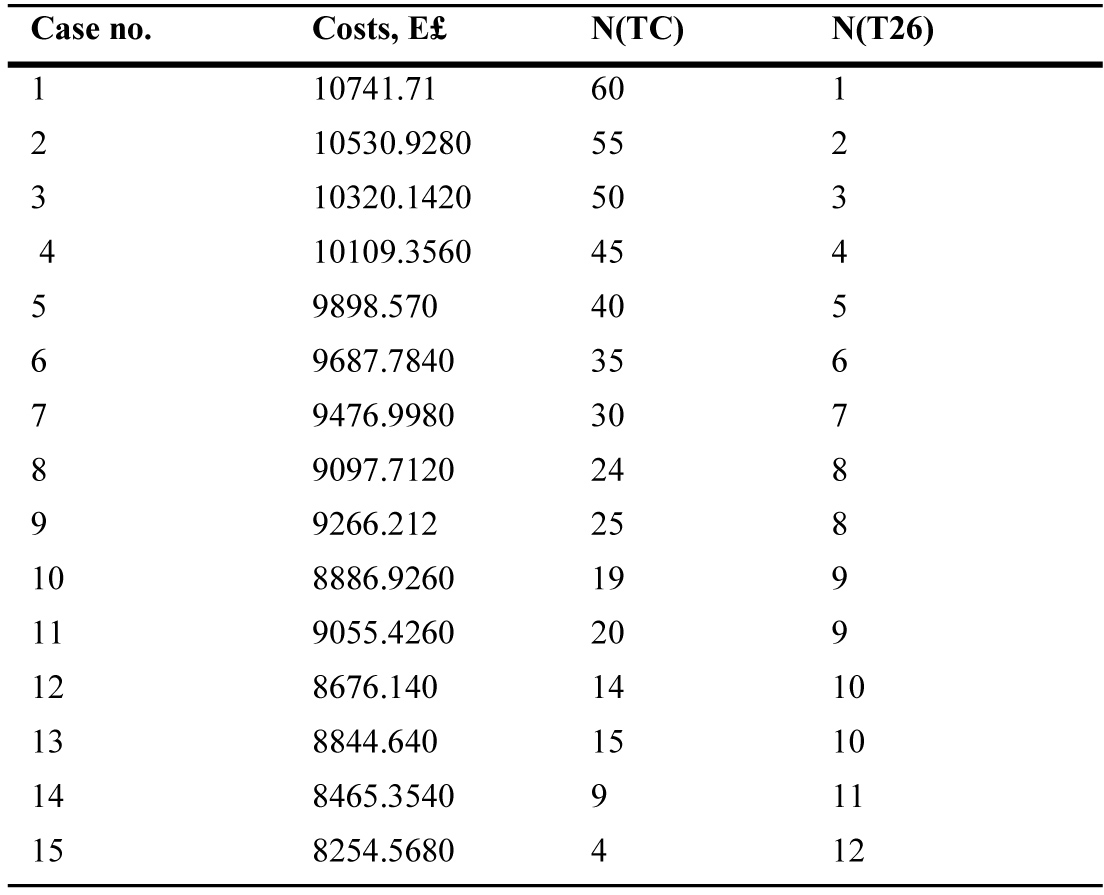Volume 7 Issue 2 pp. 137-153 • doi: 10.15627/jd.2020.14
A New Trend for Indoor Lighting Design Based on A Hybrid Methodology
Fathalla Selim,∗,a,b Samah Mohammed Elkholy,c Ahmed Fahmy Bendaryd
Author affiliations
a Department of Electrical Power and Machines Faculty of Engineering, Kafrelshiekh University, Kafrelshiekh, Egypt
b Department of Electrical & Renewable Energy Engineering, Onaizah Colleges, Al Qassim, Saudi Arabia
c Department of Engineering Physics and Mathematics, Faculty of Engineering, Kafrelshiekh University, Kafrelshiekh, Egypt
d Department of Electrical Power and Machines Faculty of Engineering, Helwan University Cairo, Egypt
* Corresponding author.
hegaz2009@yahoo.com (F. Selim)
Fahmybendary10@gmail.com (S. M. Elkholy)
Samahelkholy77@yahoo.com (A. F. Bendary)
History: Received 26 April 2020 | Revised 1 June 2020 | Accepted 2 June 2020 | Published online 2 July 2020
Copyright: © 2020 The Author(s). Published by solarlits.com. This is an open access article under the CC BY license (http://creativecommons.org/licenses/by/4.0/).
Citation: Fathalla Selim, Samah Mohammed Elkholy, Ahmed Fahmy Bendary, A New Trend for Indoor Lighting Design Based on A Hybrid Methodology, Journal of Daylighting 7 (2020) 137-153. https://dx.doi.org/10.15627/jd.2020.14
Figures and tables
Abstract
Most power system planners are interested in the savings of electrical power consumption. Various references demonstrate that the highest consumed power is by the lighting systems standing around 19% of worldwide energy consumption. This article presents novel design methodology leading to maximizing revenue due to savings in electrical energy consumption through energy efficient installations. This hybrid methodology is built by combining benefits of the two traditional lighting design methods (lumen and specific connected load methods). This results in developing a new mathematical and applicable model with many advantages such as: high accuracy, fast calculations and most economical design. This proposed methodology is supported by MATLAB® package to shorten the long time consumed by conventional procedures and simplify the complex manual calculations. The hybrid method verifies its effectiveness and efficiency for achieving the maximum savings in energies and costs through the detailed discussion of case studies. A comparison with traditional designs will be introduced to ensure the achieved savings in costs leading to high quality and efficiency of power systems. By practically applying this new hybrid technique particularly for the Egyptian residential and commercial sectors, the system is expected to achieve a huge savings in consumed lighting energies and costs, which can reach 4489.433415 million E£ "≈ 280.5895 million $ "USD"" each year. The presented case studies give accurate and promising results for the proposed methodology as a new trend in energy and money saving system, which is verified by implementing two case studies and comparing with results from DIALux program. The results of the proposed methodology are very effective compared with that of conventional methods for marked benchmarking features and validation. MATLAB® simulation results of the proposed technique are implemented to verify its feasibility for any activity.
Keywords
Methodology, Lighting systems, Designs, Energy conservation
Nomenclature
Abbreviations
| CIBSE | Chartered institution of building services |
| CIE | International commission on illumination |
| ILP | Institution of lighting professionals |
| DIN | German norms: deutsches institute fur normung |
| NFPA 101 | National fire protection association “life safety standard” |
| IESNA | Illuminating Engineering Society of North America |
| BS | British Standard |
| EN | European engineering standards |
| IEC | International electrotechnical commission |
| ISO | International organization for standardization |
| EGA | Enhanced genetic algorithm |
| DLCS | Daylight-linked control systems |
| IoT | Internet of things |
| BZ | British zonal |
| ZVEI | German electrical engineering and industrial federation |
| Revit BIM | Program for architecture design |
Symbols and codes
| I | Incandescent lamp |
| PAR | Parabolic reflector |
| IC | Compact tubes |
| A | General service lamp "incandescent lamps" |
| QR | Halogen reflector lamp |
| QT | Halogen lamp (tubular form) |
| T | Fluorescent lamp |
| TC | Compact fluorescent lamp |
| LST | Low-pressure sodium lamp |
| E | Nominal illumination, lx |
| MF | Maintenance factor |
| RSMF | Room surface maintenance factor |
| LLMF | Lamp lumen maintenance factor |
| LSF | Lamp survival factor |
| LMF | Lighting maintenance factor |
| Uf | Utilance/coefficient of utilization "utilization factor" |
| L | Room length, m |
| w | Room width, m |
| N | Number of luminaires/fixture |
| n | Number of lamps/luminaire |
| F | Light output ratio |
| Kr | Room index |
| Ht | Total room high, m |
| Hs | Luminaire suspension distance from ceiling, m |
| Hm | Net used high, m |
| ρc | Ceiling reflection factor |
| ρw | Wall reflection factor |
| ρf | Floor reflection factor |
| Фi | Luminous luminaire flux under normal condition |
| Ф | Luminous flux of the lamp “luminaire” |
| K | Light loss factor |
| Pc | Total fixtures luminaires connected loads, (W/m2. 100 lx) |
| PL | Luminaire connected power, W |
| f | Correction factor |
| CT | Total fixed costs, E£ or $ |
| CF | Fixed luminaire/lamp cost, E£ or $ |
| CR | Running costs, E£ or $ |
| tb | Light source lifetimes, h |
| ta | Light source service life |
| R | Maintenance cost/year, E£ or $ |
| a | Tariff, E£ or $/kWh |
| TQ | Halogen lamp (tubular form) |
| NA | The numbers of fixtures of a light source |
| N(QT ) | The numbers of fixtures of QT light source |
| NTC | The numbers of fixtures of TC light source |
| Nj | The numbers of fixtures of light source named Nj |
| Si | The matrix number of combined light sources |
| C | Capital cost of one light source fixture, E£ or $ |
| C1 | Cost of light source fixture lamp/s, E£ or $ |
| Ni | Substituted numbers of each light source in E calculations, (i.e. NA =10, N_i ranges from 1,2, 3…10) |
| αj | Coefficient factor |
| Ei | Total illumination value with combinations of various light sources |
1. Introduction
Improving efficiency and reducing energy consumption are essential for sustainable grids [1]. The building sector is considered as one of the most sectors that consumes energy standing about 30-32% from the total energy productions, where the lighting loads consume between 5% to 20% in residential loads and up to 30% in commercial buildings [2-4]. For instance, in Europe, it represents about 14% of all energy consumption, while this ratio is around 19% of worldwide energy consumption. In special loading types, for example the retail sector, it may reach up to 80% of the energy used [2-4]. Therefore, many researchers are seemingly interested in decreasing the consumed power in lighting sections with various methods/algorithms. The study in [5] gave a sample of combined saved energy of light sources used in Japanese common squid jigging fishery. Papers [6-12] presented various controlled lighting systems to produce the required illuminance according to the human occupancy, reference to the place activity or by the vehicles traffic density in the street [10] and illumination sensors [11]. Paper [13] showed the reduction in electrical power consumption for the commercial buildings by some modifications of the installations and used materials. Paper [14] presented the design and implementation of a prototype scaled model, which can switch the power to street lamps between solar and grid supply with economic manner. Authors in [15] introduced their proposed saving system and introduce more than 22 power-saved researches, which show how to control the consumed power used especially in the lighting loads by numerous methods. On other side, IoT is also used in many applications. In [16], a micro-IoT architecture is used for LED lighting and diming control in smart homes and in [17], it is used in street lighting aided by video vehicle detection and light-dependent resistor (LDR) to control lighting on the streets to increase the safety and power saving. In [18], sensor-triggered control strategies are used to save consumption lighting power depending on the acceptance of seventeen (17) participants on the dimming fading time through their experiences and experiments. The research in [19] indicated a greater circadian stimulus and power saving by desktop overhead rather than overhead luminaires of ceiling lighting systems. In [20], the study focused on the effectiveness of using LED light sources on the greenhouse crops of tomatoes by energy combination, which can increase the yield by 12.3% and save consumed power by 30.1% instead of other threshold strategies. Authors in [21] presented the potential energy saving, from 20% to 30%, on the energy demand for lighting for an office room and a classroom by “DLCSs and occupancy off control” rather than manual ones. Other important paper [22], gave the current trends and the future directions with highlight on implementing of the hybrid: intelligent lighting control systems with intelligent control techniques especially in the commercial buildings. Authors in [23] introduced combined efficient energy analysis software with DIALux software as an intelligent energy management system. It is examined for high energy savings in metro stations in china, but without high efficiencies.
2. Overview of lighting design
Lighting is an art as well as a science and it needs more interest regarding the lighting design. The appropriate used lighting design method depends on many important parameters and the design engineering experiences [24,25]. There are many interested institutions, commission, societies and standards for lighting design, which can be used by lighting designer according to regions and needs, such as CIBSE, CIE, ILP, DIN, NFPA 101, IESNA, Engineers Lighting Code UK norms, BS, EN, IEC and ISO [25-28]. There are some researches interested in lighting design methods and its effective parameters. One of these methods is designing an appropriate lighting system by using the natural light and energy efficient luminaires [24,29]. Research [30] tried to reach the optimal selection of power saving light sources, where its design takes into account various surrounding conditions. Papers [31,32] showed the influences of lighting on the people’s productivity and performance especially students’ learning performance. For instant, paper [32] took the colour temperatures as an effective performance parameter, while others studies, i.e., [33,34], focused on the design and measurements of lighting illuminance for visual and un-visual systems to give an attention to circadian regulation, which affects sleep and mood with some suggestions for lighting designers. On the other side, the authors in [35] introduced comparisons of two outdoor lighting methods to select the best economic one for street lighting. Paper [36] explained how lighting designers are interested in the energy efficiency of light sources such as LED types added to the visual performance. Paper [37] introduced LED with high colour quality to improve the appearance of illuminated objects with some modifications on various colours band to get the required rendering index. The research in [38] analysed the influence of the luminance uniformity and spectral power distribution of LED luminaires on discomfort glare by two generic models. Paper [39] discussed the light level and visual comfort by taking into consideration glare index calculations. In [40], another study investigated the appropriate seating position and view direction in a west-facing office depending on two visual comfort objectives: daylight and glare index. Paper [41] indicated, in detail, the updating for future research works in the lighting systems from many aspects viewpoints: measurements, designs and health. Paper [42] focused on the state and conditions surrounding the lighting system to give the optimal selections, where it makes the measuring and correction quality actions between the selected lighting quality metrics derived from the spectrum and a representative set of interior light source spectra. Research [43] motivated the researchers to discuss the effective use of combination of LED products to reduce insect attraction. Authors in [4,44] tried to increase natural light availability, where authors of [4] supposed six different configurations of an internal/external light shelf and they advise the most two efficient models. Authors of [45] gave advisements to lighting designers, road authorities, etc. to use significance indicators (e.g. new part of EN13201-5) in the initial stage of lighting design and for evaluation a criteria, which can increase energy savings. Paper [46] indicated the effects of low/high illumination on the human safety and it introduced stair LED safety model. Authors in [47] introduced fixed and more energy efficiency illumination for interior lighting spaces by mixing the daylight (Fresnel lens) and LED lamp.
2.1. The aims of the proposed paper
- Developing the mathematical construction of the hybrid proposed method,
- Giving the proposed mathematical model with clear effective factors calculations, unlike other programs such as: Dialux, Relux, etc. that give the design without indicating these factors,
- Creating multi-designs from individual designs, and highlights the saved energy and money through case studies,
- Evaluating the energy savings effectiveness on increasing the quality of power system,
- Giving accurate, easy and fast open-code designing program for the lighting designers.
2.2. Lighting design advantages
The lighting design "good lighting system" plays an important role in safeguarding health for the persons using these systems. Therefore, it should satisfy many requirements, such as [29,48-52]:
- Regarding general features, it should fulfil illumination level" E", uniform distribution, glare limitation, etc.
- Regarding new and advanced quality criteria, it should achieve energy efficiency, possibility of simple control and regulation, etc.
- Regarding energy consumption, it should realize energy conservation, use of daylight, detector implementation, saving lamps, etc.
2.3. Lighting definitions
There are some important definitions, such as: lighting, luminous flux, glare, colour rendering classes, etc. [24,27,29,48,49,53-56]. This study is interested in the indoor lighting design, where the appropriate light sources types, symbols, and utilizations are summarized in the Nomenclature and more details are found in [48,49,54,57]. The recommended light levels "E, lx" and their accompanied light lamps are given in Table 1 [24,29,48,49,53-61]. Some of these light source samples are used in the case studies [54].
Table 1
Table 1. Samples of recommended lighting indoor illuminance and light sources symbols [24,29,53-61].
Regarding Table 1, the following remarks can be summarized: Table 1 explains the activity spaces illuminance "E" levels and the corresponding light sources, the complete design "accurate design" should take into consideration the illuminance according to: task area, surrounding area and immediate vicinity of the task area [48-49], and reference [54] gives samples of light source types with their main data.
2.4. Lighting design methods
There are three methods to accomplish the practical lighting design calculations, which depend on multi-effected variables and parameters "getting from standard references or manufacturers, e.g. [24,29,48,49,53-63]".
2.4.1. Utilization factor "British Zonal (BZ)"/Lumen method
The utilization factor method, the common method, estimates the dimensioning (the total numbers of luminaries and their distribution through the activity space including length and width) of a lighting installation. It helps the design engineer to decide the number of luminaires "N" and, accordingly, the fixtures on the working plane. This method gives an average illuminance over the overall space, which represents the common method in most design programs. The illumination level "E" can be calculated as follows [24,25,53-61,64-67]:
The terms (K.F) may be replaced by MF "maintenance factor" [37,42] that can be calculated from:
Table 2 gives various maintenance factors according to room classifications.
2.4.1.1. Factors determination
- The light output ratio, F is the ratio of "Фi" under normal conditions to "Ф", which depends on the lamp type [54].
- Utilance/coefficient of utilization, Uf, can be calculated after deciding the following factors:
- Room index "Kr", which describes the influence of the room geometry on the utilance [25,61];
- The room reflection factors; ρc, ρw and ρf decided according to their colours [54].
- The light loss factor "K" indicates the reduction in lighting lamp performance [54].
- The maintenance factor "MF", which can be decided according to room classifications and lamp/luminaire condition [61,65].
The net used height Hm;
By using kr,ρc,ρw and ρf, "Uf" can be decided from the luminaire/lamp datasheet Table "light sources/lamps Uf table" [54].
2.4.2. Point-by-point method
This method is programming dependent, which can predict direct illuminance at each point on a plane "using measured data of luminous intensity distribution of a source or a luminaire". It depends mainly on the inverse square law and cosine law. Computer software, e.g., Revit BIM, can be used to perform numerical point-by-point calculations and sketch this distribution [54,61,67].
2.4.3. Specific connected load method
This method is connected-load dependent. The illuminance of luminaire, with its average consumed power, and the appropriate illumination "E" can be decided as follows [24,53,54,56]:
2.4.3.1. Factors determination
Total luminaires connected loads, Pc, can be determined by the manufactures tables or by the standard references as shown in Table 3 [54].
The correction factor "f"; is determined according to Ht, ρc, ρw, and ρf as illustrated in Table 4 [54].
2.4.4. Lighting costs
The lighting costs are very important to decide the efficient designs, where the costs comprise: the fixed cost including luminaire, labour, pipes, wiring, and accessories costs, and the variable "running" costs including operating time costs for energy, material and staff wages carrying out the maintenance and lamp replacement costs.
Therefore, to decide the optimal lighting design, it is important to recognize the following cost equations [47,57]:
2.4.5. Summary
From the above, it can summarize: Each design method is applied individually independent on the others, the applied methods "especially lumen and point by point" depend on the user experience, especially on the programming system, the three methods can be classified as: the first, "Lumen method, common one, gives the average illuminance value and the required luminaire numbers", the second, "Point-by-point method", decides the point to point illuminance, and the third, "Specific connected load method", is rarely used. But, the main disadvantages of these methods are: the blind designs without explanations the main effective factors, i.e., reflection factors, room index, utilance factor, etc., especially the programming methods, e.g., DIALux, Relux, there is no combination between them to enhance the designs efficiency, there is no application for specific connected load method, and there is no design cost analysis model/program to select the optimal designs.
Therefore, the proposed hybrid methodology will overcome these drawbacks.
3. Proposed methodology
This hybrid proposed method will be displayed through the following sections.
3.1. Structure and flowchart
Figures 1 and 2 give the hybrid method full descriptions in the form of the structure and programming and the flowchart, respectively.
According to Figs. 1 and 2; the hybrid proposed method uses the common method "Lumen" for deciding the required numbers of luminaires by the same designer engineering procedures, i.e., similar to other design programs, such as DIALux etc. However, it accomplishes the additional tasks: completing the hybrid methodology by using additional method, combination with specific connected load method, to give the accepted multi-designs, and analysing the accepted designs costs to decide the most savings.
3.2. Proposed methodology mathematical model
The following procedures are accomplished to develop the mathematical model of the proposed methodology.
- 1Calculating the appropriate numbers of luminaires according to the space activity "Lumen method":
- 2. Deciding the accepted designs by light sources combinations, according to specific connected load method and Eq. (6), the outputs from Eq.(11) " NA, NQT and NTC"are used and substituted as in (12) "modification of Eq. (6)":
- Using the combined matrices
- Evaluating the designs costs
According to the space activity, the user can decide illuminance "E" and the light source types from Table 1, using Eq. (11) to calculate the required luminaire numbers "N":
For example, if the activity space is a meeting room, the used source types "Table 1" may be A, QT or TC. By using Eq. (11), there are three light sources luminaires numbers " NA, NQT and NTC".
Note that; There are fixed parameters, i.e., ρc, ρw, ρf, MF, L and W, and variables parameters, i.e., Φ, n and Uf, which can be decided according to the light sources "references/manufactures" [54].
where I is the starting and ending numbers according to the light source types "i.e. NA, NQT…Nj", and j; indicates the last light source type number.
For simplification:
where E1, E2 …Ej are the illuminance levels by using light sources A, QT ….. j, respectively.
The outputs of the proposed system calculations "two combined methods forNA and NQT" can give numerous designs:
The combination between the first two types, i.e., NA and QT, will give a matrix "S1" with (NA. NAQT) for design cases:
Any element of the matrix S1, i.e., accepted Ei, lx, can be estimated from:
By the same manner, the following three matrices are formulated:
The accepted Ei is obtained as follows:
The accepted Ei is obtained as follows:
The accepted Ei:
From the above equations and matrices, the total Ei will be calculated from:
The accepted Ej will be derived from:
The cost calculations and analysis should be accomplished to decide the most economical design:
Using the following modified equations, referred to Eqs. 8-10, for each accepted selected designs, to calculate each accepted design cost:
The cost for each accepted designs from Eq.(31) can be calculated by :
Figure 3 displays samples of individual and combined light sources designs.
Figure 3
Fig. 3. Samples of individual and combined designs of light sources (a) design of light source 1, (b) design of light source 2, and (c) combination of two light sources "1 and 2".
Summary
From this section, it can summarize: The proposed methodology will give multi-designs for the same required "E", the numbers of cases "designs" equal the total matrix item outputs from S1+S2+S3+S4 according to Eq. (33), the accepted designs are decided by Eq. (34), the minimum-cost design is decided by Eq. (36), and the calculations are complex and need longer times.
Case studies
This section highlights the case studies with: conventional lamps and tubes "case study 1" and LED lamps "case study 2". These cases will be implemented in Egypt according to price lists of local products companies. The calculations will be performed by manual calculations, where the user can recognize in detail how to use this proposed hybrid methodology, and by fast and simple verification of MATLAB® program.
4.1. Case study 1
4.1.1. The hybrid method manual calculations
These manual calculations comprise the basic designs using Lumen method with preferable light sources according to activity space [54], combination with specific connected loads method and generating the most economic multi-design cases.
4.1.1.1. Basic designs
Suppose the activity place has the following data described in Table 5:
Table 5 data analysis: Light lamp "TC-9 W" is similar in its features and curves to lamp type "Eco Home LED Bulb 10W E27 6500KHV 1CT/48AR, Philips-leaflet [63]", which gives Uf = 0.41-0.45, in the individual lighting design; the used luminaire numbers should be integer "not fraction", therefore the required luminaires for N (T26) = 13/14 (each luminaire has 2 lamps), and the required for N (TC) = 66 lamps, the decided numbers should verify the required illumination level "E = 495-505 lx ", for individual design, the required numbers of luminaires must be even not odd "N (T26) = 14", and these calculations can be applied by dividing the activity space into multi sections with different illuminance "E" values according to the advisements of [48,49].
However, the main aim in this study is to display how to use this proposed hybrid methodology in a general form "the methodology can be applied for different E values in the same activity space to give the same savings".
By using Eq. (11), the required luminaires numbers for two light sources are:
4.1.1.2. Specific connected loads application
According to Table 4 with area = 30 m2 "6. 5, 20< 30 <50", H =3.5 m "3< Ht <5" and the reflection factors from Table 5; the correction factor "f" is the average of two values "the value between 0.55 and 0.75 in Table 4" = (0.55+ 0.75)/2 = 0.65,
The specific connected load "Pc" can be taken from Table 3 or by the direct calculations by using Eq. (6) where N(T26)=12.8155, the value of PC for light source T26 is:
N (TC) = 65.359, the value of PC for light source TC is:
Explanations: The numbers of luminaires are taking directly from the basic design calculations "N(T26)=12.8155 and N(TC)=65.359", and the required values of "Pc" don’t need to reach the nearest integer unlike in the design case.
4.1.1.3. Design costs
Table 6 gives the full data about the fixed and running costs "E£" according to the two decided light sources, i.e., T26-18 W and TC- 9 W, the referenced Egyptian products company [68], experiences in this field and average Egyptian tariff [69].
Table 6 data analysis: Lifetime "tb" that is suggested to be 20000 h referes to the lifetime of the light source fixture and electrical installations "not lamps". For example, if the duty operation of a lamp is 12 h/day, then the operation times through one year = 4380 h. The fixture lifetime, by using 20000 h, is now corresponding to 4.566 years, which is very low lifetime for any light source fixture, the prices in Table 6 are the commercial prices in the Egyptian market corresponding to the given light sources features, e.g., the price of TC-9 W produced by Toshiba Egypt [68] is 37.5 E£, which has 25000 h lifetimes and 900 lumens. The used lamp in this study operates 8000 h with 600 lumens [54], which leads to reducing the lamp price, the commercial price = 10 E£, the rate of maintenance, i.e., cost/year R, E£ or $, is taken as the minimum rate of maintenance that takes into account the number of lamps /light source, e.g., for T26 there are two lamps with R = 1 E£. On the other hand for TC-9 W, there is one lamp with R = 0.5 E£. These values are set based on the experience in the practical field, according to [70], the yearly person consumed energy (2017-2018) is 2016 kWh which means that in case of family constituting of 4 persons as an average number, the yearly energy is 8064 kWh and the monthly consumed energy is 672 kWh and the Egyptian tariff of a =0.75 E£/kWh is assumed as an average value [69] "this assumption is based on the consumed energy, i.e., 672 kWh/M, where the tariff is in the range between 0.70 - 0.9 E£".
Note that; the dollar exchange rate is 16 E£.
By substuiting from Table 6 data into Eq. (35):
The cost of light source "T26", E£:
The cost of light source "TC", E£:
4.1.1.4. The hybrid method optimal desgins
4.1.1.4.1 Application with fixed lifetime value
By using Eqs. (12-14), (18), (33-36), the calculated values of illuminances for two light sources "variation with luminaire numbers" are as follows:
Note that; Illuminances calculations "Ei" for light source "T26, i :1 to 14", give 14 different values of E1, illuminances calculations "Ej" for light source "TC, j :1 to 66", give 66 different values of E2, the combination of these values "Ei and Ei", generates 924 different values as in Table 7, and the accepted values decide by Ei+ Ej = 500±1%=495-505 lx from the 924 values.
Table 7 shows combination accepted values "cases" i.e. 495≤Ei+ Ej≤ 505 lx, (e.g. E (T26) = 468.12 lx at N (T26) = 12, E (TC) = 30.6 lx at N (TC) = 4 "same row". The combination of these values is 498 lx "accepted", this can be applied for the same table rows.
Note that; The costs of these accepted values are decided and compared with the cost of basic individual designs to decide the optimal minimum designs.
From the general cost form given by Eq. (35):
The cost for each number of light source "T26", E£:
The cost for each number of light source "Tc", E£:
Table 8 data analysis: The column number six gives the accepted E values, e.g., 312.08+183.6 = 495.68 lx, the numbers in column number seven "CT", give all cases with costs lower than the costs of "TC–9 W" and "T26-18 W" light sources design "related their costs".
Table 8
Table 8. The accepted values of E1 and E2 with their accompanied numbers of luminaires/lamps and costs "E£".
Table 9 analysis the cost savings "E£" by the proposed hybrid method instead of two individual designs of light sources, which uses lumen method only".
Table 9
Table 9. Savings with the proposed method instead of two individual light sources designs (derived from Table 8).
4.1.1.4.2 Application with variable lifetime values
- The costs of the two light sources that vary with N and tb are given as follows:
- Substituting in the individual designs with N(T26) = 14, N(TC) = 66 and tb =4380 h, the costs can be calculated for CT (T26) and CT (TC), where CT (T26) = 2439.8 E£ and CT (TC) = 2873.64 E£,
- The operation lifetime values "tb" affects the percentages of hybrid method saving. "TC-9 W" is taken as a base case for comparisons as displayed in Table 10. The lifetime values rang from tb = 4380 h up to tb = 50000 h,
- The data for the proposed method are taken according to the "accepted cases, from Table 8" for the 15 cases regarding the values of (T26) and N (TC) in column 2 and 4 in Table 8.
- Figure 4 illustrates the variation of percentage savings for the 15 cases "percentages saving" depending on lifetime’s values for tb from 4380 to 50000 h.
Table 10 and Fig. 4 data analysis: The lifetime increase causes corresponding increase in the percentages saving, the minimum lifetime value "tb =4380 h" that is very low, gives percentage savings from 3.03% to 21.163% related to the traditional design, by using T26 light source lifetime "tb = 7000 h", percentage savings will range from 3.194% up to 23.1853% related to the traditional design and generally, there are considerable percentage savings for any supposed lifetime values.
4.1.2 Developed MATLAB® program
All the previous equations, calculations, data, parameters and mathematical model applications can be performed by developing a program tool on MATLAB® package [71]. This program can give the multi-designs with any numbers of light sources by fast and accurate manner. For example, the following tables give the same previously discussed designs for the two light sources "T26 and TC" by the MATLAB® proposed program instead of manual calculations.
Table 11 gives the accepted design cases "495≤E≤505, lx, similar to Table 7", while Table 12 displays the accepted values of Ei, which satisfy since the costs of these accepted values "E1+E2" are lower than the cost of TC light source "11121 E£", which is similar to values in Table 8.
By using hybrid MATLAB® program, the percentage savings with respect to T26 and TC are shown in Tables 13 and 14, respectively, where the results are similar to the manual calculations in Table 9.
The maximum lifetime of fixture tb in Tables 13 and 14 is 20000 h "low lifetime value", which increases the percentages saving from 1.898% to 25.774%.
4.2 Case study 2
By the same manner and procedures, case study "2" can be implemented, by hybrid methodology, using LED lamps to verify that hybrid system can be applied for any lamp type with considerable percentage savings. This case study uses the same data in the previous case "case study 1" with some modifications as in Table 15.
Table 15 data analysis: Light lamp types "9W-60 cm TM-D10H" and "9 W -White Light BM-D09H" are from Egypt Toshiba Elaraby Company [68], the values of Uf for these lamps are not found in the datasheets of Elaraby Company. Therefore, reference [68] is used to obtain the values of Uf: Light lamp "9W-60 cm TM-D10H, Toshiba [68]" is similar in its features and curve to lamp type "Ecofit LED tube HO 600mm 10W 765 T8 RCA, Philips-leaflet [63]", which gives Uf = 0.53, and light lamp "9 W -White Light BM-D09H, Toshiba [68]" is similar in its features and curve to lamp type "Eco Home LED Bulb 10W E27 6500KHV 1CT/48AR, Philips-leaflet [63]", which gives Uf = 0.41.
By using Eq. (11), the required fixtures "luminaires" numbers for the two light sources are:
Note that: N (TM-D10H) = 18 (each luminaire has 2 lamps), and the required for N (BM-D09H) = 54 lamps.
The specific connected loads, using the same parameters in case 1, can be calculated by Table 3 or by the direct calculations using Eq. (6) where:
N(TM-D10H) =16.6480, the value of PC for light source (TM-D10H):
N(BM-D09H) = 53.802, the value of PC for light source (BM-D09H):
Eq. (35) can use the data in Table 16 to calculate the two light sources costs:
The cost of light source "TM-D10H", E£:
The cost of light source "BM-D09H", E£:
By using Eq. (6), the values of two light sources illuminance are:
Note that; Illuminances calculations "Ei" for light source "M-D10H, i: 1 to 18", give 18 different values of E1, and illuminances calculations "Ej" for light source "BM-D09H, j: 1 to 54", give 54 different values of E2.
The two light sources costs with variation of luminaires numbers:
According to given data, equations and by application of hybrid method on MATLAB® package, the final cost and percentages savings can be shown in Tables 17 and 18.
Tables 17 and 18 data analysis: This hybrid system is effective in saving money with any light source type and the percentages saving range from 0.3199% up to 24.3566% "tb from 20000 h up to 500000 h".
4.3 Verification of the proposed hybrid method
According to the previous sections, the proposed hybrid method succeeded to introduce high efficient methodology to overcome the most drawbacks of traditional methods, since it generates multi-accepted and most economical designs from two individual designs. This hybrid method success to give multi accepted and minimum lighting design calculations, the remained final step in lighting design is deciding the numbers of luminaires in the activity space length and width. The distribution of luminaires through activity space can calculated by [54-56]:
where NL is the distributed luminaire numbers of the space length and NW is the distributed luminaire numbers of the space width.
To verify the accuracy of results obtained by the proposed hybrid method, the results of "case study 2" are compared with that obtained by a standard program, i.e., DIALux program (4.12.1) and according to [48,49] by using two designs: individual design of light lamp "9W-60 cm TM-D10H/Ecofit LED tube HO 600mm 10W 765 T8 RCA" and proposed hybrid method with case 17 in Table 18 "case 4 in Table 17".
4.4 Application of the proposed methodology in Egypt
According to reports through 2014-2018 [69], the residential and commercial sectors consume more than 56% of the total electricity consumption in Egypt "2017-2018". The household electricity consumption of lighting is estimated to be 30%, while consumption of entertainment devices is 15% and that of fridges is 13% representing the largest parts of residential electricity consumption. The total annual Egyptian energy consumed through 2017-2018 in commercial and residential sectors are 75181 MWh. The lighting systems consumed about 30% of the total consumption, i.e., 30% of 75181 = 22554.3, which is a very high consumption.
The following points should be noticed:
- The average lighting system operations through four seasons in Egypt is 12 h/day [69,70]. This means that, the yearly light operation time is 365×12 = 4380 h. This value will be used instead of 20000 h in calculations to verify the savings will be executed for very low lifetime value.
- The result values by application of Eqs. (35) and (36) with tb = 4380 h, CT (T26) = 2439.8 E£, and CT (TC) = 2873.64 E£, are shown in Tables 19 and 20 as obtained from the MATLAB® program.
If the proposed methodology is applied for the Egyptian lighting system, commercial and residential sectors, considerable savings in energy and money will be achieved as shown in Table 21 assuming the average tariff = 0.75 E£/kWh [69,70]. Table 21 describes the growth in energy and money savings with this effective hybrid method. The savings in energies vary from 5.1874 to 4773.7980 GWh/y and the savings in money start from 3.890 up to 3580.348522 million E£, ≈ 223.7717 million $, for only one year.
From the above, it can summarize: Practically, the light source fixture lifetime value not less than 10 years, which means that the operating times are 43800 h, by applying tb = 43800 in hybrid methodology using MATLAB® program, the percentage saving reaches to 26.54% related to TC-9 W light source as shown in Fig. 5, which displays the various percentage savings for each case of the 15 accepted cases in Table 11 with variation of lifetime values "tb" from 4380 up to 43800 h, by using the highest percentage saving, i.e., 26.54%, the saving in energy is 5985.911GWh/Y and the corresponding money saving is 4489.433415 million E£, or 280.5895 million $, each year.
Figure 5
Fig. 5. The percentages saving increased by the extending light source lifetimes (from 4380 up to 43800 h for TC light sources).
The user of the program can select any range of lifetime values to display the various percentage savings by the MATLAB® program.
5. Discussion
The lighting design systems, either calculations or programming, depend on single design method, almost Lumen, which gives individual design for each light source. These conventional methods are limited systems to get multi-designs probability and the decided designs do not provide cost analysis report. The hybrid proposed system in this study can overcome these lighting systems drawbacks, with clear methodology and mathematical applicable model. Through case studies and their obtained results, this hybrid system ensured its ease to be applicable for any activity spaces with multi-divisions through a simple MATLAB® program. The methodology is effective in achieving a considerable percentages saving for any light source type and their percentages saving increase by increasing the lifetime values as shown in Fig. 5. By application of this system in Egypt case, the results of percentages saving for energy and money are very satisfying. This hybrid system is compared by the standard program "DIALux" to verify its accuracy and effectiveness in energy and money savings. This hybrid MATLAB® program needs to direct link with any of drawing lighting design programs "e.g. DIALux" to supply its designs data automatically without manual user inputs "Future work".
6. Conclusions
A proposed method that merges the common design calculation method "Lumen" with combined method "specific connected loads" and applies cost analysis by mathematical model is introduced to give new trend in lighting designs. This technique can overcome the drawbacks of the traditionally used methods. The conclusions behind the benefits of this hybrid method can be summarized as: It focuses on the explanation of this new hybrid methodology to the user, it has a new mathematical model, this methodology has multi calculations and procedures to give accurate results, it can deal with any numbers of light sources and activity spaces at the same times, gives the largest numbers of accepted multi-designs according to standards and given conditions from individual design, these multi-choices lighting designs will give the design engineer the facilities to give the most effective and aesthetic design of the light sources for the given activity, e.g., reception, office room, etc., it analyses the costs of accepted designs to reach the most economic multi-designs, it helps to get the highest percentages saving as explained in Tables 13 and 14, which varies from 1.89% up to 25.7749% of the traditional designs costs, the percentages saving increases by the increase of fixture lifetime, which can reach to 26.63% by a lifetime value of tb = 43800 h as shown in Fig. 5, by practical application of this hybrid method in Egypt, the system achieves considerable savings in consumed lighting energy and money "which ranges from 3.890 to 4489.433415 million E£, i.e., 280.5895 million $", the effectiveness of the methodology is verified regarding the energy and money savings by comparing a case study "2" with DIALux program, and the algorithm can be easily executed by developing a MATLAB® program to solve the problems of the longer procedures and the complexity of the multi-calculations. This open code program can perform all calculations and give the results within 20-30 s, instead of many hours using manual calculations.
Acknowledgement
The authors would like to thank the following organizations: Kafrelshiekh University, Onaizah colleges and Helwan University for their supports.
Contributions
Dr. F. Selim: He is the main author of the research with contributions including idea and methodology of the entire research, except for a special part in parts of programming equations. Helping was done through Dr. S. M. Elkholy. She made a combination of the two traditional methods to give the proposed method, Dr. S. M. Elkholy helped in equations and the program. Dr. Ahmed F. Bendary performed a complete review of the research, corrected engineering and linguistic errors, and helped in deleting some unhelpful paragraphs. He reviewed the important paragraphs: abstract, proposed methodology steps, conclusions.
Declaration of competing interest
The authors report no conflicts of interest. The authors alone are responsible for the content and writing of this article.
References
- S. Chandaa, F. Shariatzadeha, A. Srivastava, E. Lee, W. Stone, J. Ham, Implementation of non-intrusive energy saving estimation for Volt/VAR control of smart distribution system, Electric Power Systems Research 120 (2015) 39-46. https://doi.org/10.1016/j.epsr.2014.09.023
- L. P. Lombard, J. Ortiz, C. Pout, A Review on Buildings Energy Consumption Information, Energy and Buildings 40 (2008) 394-398. https://doi.org/10.1016/j.enbuild.2007.03.007
- Notices from European Union institutions and bodies, Community guidelines on state aid for environmental protection, Official Journal of the European Union, Text with EEA relevance, C.82/01(2008), Available at: https://www.eea.europa.eu/data-and-maps/indicators/final-electricity-consumption-by-sector.
- P. Zazzini, A. Romano, A. D. Lorenzo, V. Portaluri, A. Di Crescenzo, Experimental Analysis of the Performance of Light Shelves in Different Geometrical Configurations through the Scale Model Approach, Journal of Daylighting 7 (2020) 37-56. https://doi.org/10.15627/jd.2020.4
- Y. Matsushita and Y. Yamashita, Effect of a stepwise lighting method termed ‘‘stage reduced lighting’’ using LED and metal halide fishing lamps in the Japanese common squid jigging fishery, The Japanese Society of Fisheries Science 78 (2012) 977–983. https://doi.org/10.1007/s12562-012-0535-z
- E. Juntunen, E. Tetri, O. Tapaninen, S. Yrja, V. Kondratyev, A. Sitomaniemi, H. Siirtola, E.M. Sarjanoja, J. Aikio, V. Heikkine, A Smart LED Luminaire for Energy Savings in Pedestrian Road Lighting, Lighting Research and Technology 47 (2015)103–115. https://doi.org/10.1177/1477153513510015
- H. S. Lee, S-Y. Kwon and J-H. Lim, A Development of a Lighting Control System Based on Context-Awareness for the Improvement of Learning Efficiency in Classroom, Wireless Personal Communications 86 (2016) 165–181. https://doi.org/10.1007/s11277-015-2811-6
- A. Pandharipande, GR Newsham, Lighting controls: Evolution and Revolution, Lighting Research and Technology 50 (2018) 115–128. https://doi.org/10.1177/1477153517731909
- Y. Minami and Y. Takamoto, Development of a distributed lighting control system, Artificial Life and Robotics 24 (2019) 75-81. https://doi.org/10.1007/s10015-018-0453-y
- A. T. Ergüzel, A study on the implementation of dimmable street lighting according to vehicle traffic density, Optik-International Journal for Light and Electron Optics 184 (2019) 142-152. https://doi.org/10.1016/j.ijleo.2018.12.183
- D. H W Li, S. Li and W. Chen, Estimating the switching frequency and energy saving for daylight-linked lighting on-off controls, Energy Procedia 158 (2019) 2878-2883. https://doi.org/10.1016/j.egypro.2019.01.939
- Z. Li, J. Li, X. Li, Y. Yang, J. Xiao, B. Xu, Design of Office Intelligent Lighting System Based on Arduino, Procedia Computer Science 166 (2020) 134–138. https://doi.org/10.1016/j.procs.2020.02.035
- A. F. Radwan, A. A Hanafy, M. Elhelw, A. E. A. El-Sayed, Retrofitting Of Existing Buildings to Achieve Better Energy-Efficiency in Commercial Building Case Study: Hospital in Egypt, Alexandria Engineering Journal 55 (2016) 3061–3071. https://doi.org/10.1016/j.aej.2016.08.005
- K. P. P. Cauvery, P. Dharanidhar and K. C. S. Thampatty, Design and implementation of a prototypic hybrid power supply system for street lighting, in: IEEE Region 10 Humanitarian Technology Conference (R10-HTC), 2017, pp. 831-836, Dhaka, Bangladesh. https://doi.org/10.1109/r10-htc.2017.8289084
- F. Selim, M. I. Abdelwanis, Advanced Low-Cost Smart Power Saving System For Public Buildings, in: 11th International Conference on Electrical Engineering ICEENG, 2018, Egypt. https://doi.org/10.21608/iceeng.2018.30176
- C. L. Hu, T-K. Chan, Y-C. Wen, T. Tantidham, S. Sanghlao, B. Yimwadsana, and P. Mongkolwat, IoT-Based LED lighting control in smart home, in: IEEE International Conference on Applied System Invention (ICASI), IEEE 2018, pp. 877-880, Tokyo, Japan. https://doi.org/10.1109/icasi.2018.8394405
- S. C. Suseendran, N. K. B, J. Andrew and M.S. B. Praba, Smart Street lighting System, in: Proceedings of the International Conference on Communication and Electronics Systems (ICCES 2018), IEEE 2018, pp. 630-633, India. https://doi.org/10.1109/cesys.2018.8723949
- S. Chraibi, P. Creemers P, C. Rosenko, EJ V. Loenen, MBC Aries, ALP Rosemann, Dimming Strategies for Open Office Lighting: User Experience and Acceptance, Lighting Research and Technology 51(2019) 513–529. https://doi.org/10.1177/1477153518772154
- C Jarboe, J Snyder, MG Figueiro, The Effectiveness of Light Emitting Diode Lighting for Providing Circadian Stimulus in Office Spaces While Minimizing Energy Use, Lighting Research and Technology 52 (2019) 167-188. https://doi.org/10.1177/1477153519834604
- L Xu, R Wei and L Xu, Optimal Greenhouse Lighting Scheduling Using Canopy Light Distribution Model: A Simulation Study On Tomatoes, Lighting Research and Technology 52 (2019) 233-246. https://doi.org/10.1177/1477153519825995
- V. R.M. Lo Verso, A. Pellegrino, Energy Saving Generated Through Automatic Lighting Control Systems According to the Estimation Method of the Standard EN 15193-1, Journal of Daylighting 6 (2019) 131-147. http://dx.doi.org/10.15627/jd.2019.13
- K. R. Wagiman, M. N. Abdullah, M. Y. Hassan, N. H. M. Radzi, A. H. A. Bakar, T.C. Kwang, Lighting system control techniques in commercial buildings: Current trends and future directions, Journal of Building Engineering 31 (2020) 101342. https://doi.org/10.1016/j.jobe.2020.101342
- X. D. Lai, M.Y. Dai and R. Rameezdeen, Energy saving based lighting system optimization and smart control Solutions for rail transportation: Evidence from China, Results in Engineering 5 (2020) 100096. https://doi.org/10.1016/j.rineng.2020.100096
- The Basics of Efficient Lighting, A Reference Manual for Training in Efficient Lighting Principles, National Framework for Energy Efficiency, 2009, Available at: www.academia.edu/15953247/.
- O. Folorunso, Lighting Design, Electrical Power and Lighting Installation, Available at: https://www.academia.edu/32288622/BASIC.
- N. Charness, K. Dijkstra, Age, Luminance, and Print Legibility in Homes, Offices, and Public Places, Human Factors and Ergonomics Society 41(2) (1999) 173–193. https://doi.org/10.1518/001872099779591204
- M. Karlen, J. R. Benya, Lighting Design Basics, John Wiley & Sons, Inc. Hoboken, New Jersey, 2004.
- L. Division, Public Lighting Design Manual, Third edition, Highways Department, the Government of the Hong Kong Special Administrative Region, 2016, Available at: www.hyd.gov.hk/.../doc/PLDM_2016.pdf.
- The Lighting Handbook, Zumtobel Lighting GmbH, 6851 Dornbirn, Austria, 2016, Available at: https://www.zumtobel.com/PDB/teaser/EN/Lichthandbuch.pdf.
- M. Cole, K. Martin, Lighting, light sources, economics and safety, Petroleum and Chemical Industry Conference Europe Electrical and Instrumentation Applications IEEE 2011, Italy.
- S. A. Samani, The Impact of Indoor Lighting on Students’ Learning Performance in Learning Environments: A knowledge Internalization Perspective, International Journal of Business and Social Science 3 (2012) 127-136.
- K. Choi, H.-J. Suk, Dynamic Lighting System for the Learning Environment: Performance of Elementary Students, Optics Express 24 (2016) A907-A916. https://doi.org/10.1364/oe.24.00a907
- R. J. Lucas , S. N. Peirson, D. M Berson, T. M Brown, H. M Cooper et al., A Measuring and Using Light in the Melanopsin Age, Trends in Neurosciences 37 (2014) 1-9. https://doi.org/10.1016/j.tins.2013.10.004
- MG Figueiro, MS Rea, Office Lighting and Personal Light Exposures in Two Seasons: Impact on Sleep and Mood, Lighting Research and Technology 48 (2016) 352–364. https://doi.org/10.1177/1477153514564098
- Sędziwy, Adam, A new approach to street lighting design, Leukos 12 (2016) 151-162. https://doi.org/10.1080/15502724.2015.1080122
- F.G. Montoyaa, A. P. Garcia, A. Juaidia, F. M. Agugliaro, Indoor Lighting Techniques: an overview of evolution and new trends for energy saving, Energy and Buildings 140 (2017) 50-60. https://doi.org/10.1016/j.enbuild.2017.01.028
- XF Feng, W Xu, QY Han, SD Zhang, Colour-Enhanced Light Emitting Diode Light With High Gamut Area For Retail Lighting, Lighting Research and Technology 49 (2017) 329–342. https://doi.org/10.1177/1477153515610621
- Y Yang, MR Luo and WJ Huang, Assessing glare, Part 4: Generic models predicting discomfort glare of light-emitting diodes, Lighting Research Technology 50 (2017) 739-756. https://doi.org/10.1177/1477153516684375
- Q. J. Kwong, Light level, visual comfort and lighting energy savings potential in a green-certified high-rise building, Journal of Building Engineering 29 (2020) 101198. https://doi.org/10.1016/j.jobe.2020.101198
- J. Yao, Identifying occupant’s appropriate seating position and view direction in office buildings: A stochastic shade control based multiobjective visual comfort optimization, Journal of Green Building 15 (2020) 15-36. https://doi.org/10.3992/1943-4618.15.1.15
- P.R. Boyce, The Present and Future of Lighting Research, SDAR Journal of Sustainable Design and Applied Research 6 (2018) 2. https://doi.org/10.21427/D7853J
- P. B. habil, QT Vinh, TQ Khanh, Correlations among Lighting Quality Metrics for Interior Lighting, Lighting Research and Technology 51 (2019) 1192–1207. https://doi.org/10.1177%2F1477153518818856
- Technical Notes, Human Health: LED Lighting, Insects and Wavelength, Lighting Global 26 (2018), Available at: https://r.search.yahoo.com/_ylt=AwrEZ7BH1NheaWwA3CYPxQt.
- F. Liu, H. Zheng, R. Jin, X. Ma, Design of a Multi-Surface Solar Concentrator, Journal of Daylighting 6 (2019) 176-186. https://doi.org/10.15627/jd.2019.16
- L.T. Doulos, I. Sioutis, P. Kontaxis, G. Zissis and K. Faidas, A decision support system for assessment of street lighting tenders based on energy performance indicators and environmental criteria: Overview, methodology and case study, Sustainable Cities and Society 51 (2019) 101759. https://doi.org/10.1016/j.scs.2019.101759
- L. V. de Perrea, S. Danschutter, K. Janssens, P. Hanselaer, M. Dujardind, K. A. G. Smet, W. R. Ryckaert, Safety perception of stairs with integrated lighting, Building and Environment 166 (2019) 106389. https://doi.org/10.1016/j.buildenv.2019.106389
- H. J. Han, M.U. Mehmood, R. Ahmed, Y. Kim, S. Dutton, S. H. Lim and W. Chun, An advanced lighting system combining solar and an artificial light source for constant illumination and energy saving in buildings, Energy and Buildings 203 (2019) 109404. https://doi.org/10.1016/j.enbuild.2019.109404
- Light and Lighting of work places–Part 1: Indoor work places; German and English version prEN 12464-1:2019, German Institute for Standardisation (Deutsches Institut für Normung), Available at: https://shop.standards.ie/en-ie/Standards/DIN-EN-12464-1-2019-1151798_SAIG_DIN_DIN_2733479/.
- The Indoor Lighting Standard, SFS-EN 12464-1:2011, Available at: https://www.ensto.com/support/tools/lighting-guide/the-indoor-lighting-standard-sfs-en-12464-12011/.
- Lighting Assessment in the Workplace, Third edition, Occupational Safety and Health Branch, Labour Department, 2008, Available at: http://www.labour.gov.hk/eng/public/contente_9.htm.
- Illuminating stuff: The new daylighting standard, European Standard EN 17037, 2019, Available at: https://www.ribaj.com/products/designing-buildings-to-new-daylighting-european-standard-en-17037-velux.
- Energy Performance of Buildings-Energy Requirements for Lighting- Part 1: Specifications, Module M9 (EN 15193-1: 2017), Available at: https://infostore.saiglobal.com/en-us/Standards/EN-15193-1-2017-342480_SAIG_CEN_CEN_784273/. https://doi.org/10.3403/30292861u
- Lighting Design Manual, U.S Department of Veterans Affairs, 2015, Available at: https://www.cfm.va.gov/til/dManual.asp.
- R. Ganslandt, H. Hofmann, Handbook of Lighting Design, ERCO Leuchten GmbH, Germany, 1992, Available at: https://r.search.yahoo.com/_ylt=AwrDQrbFxtheoPAALQMPxQt.
- Lighting at Work, Health and Safety Executive, Crown copyright 1997, Available at: https://www.hse.gov.uk/pubnS/priced/hsg38.pdf.
- Recommended Light Levels, The national Optical Astronomy Observatory, Available at: https://www.engineeringtoolbox.com/light-level-rooms-d_708.html.
- The Lighting Handbook, Zumtobel Satff, 2004, Available at: https://www.zumtobel.com/PDB/teaser/EN/lichthandbuch.pdf.
- Lux Level Guide, Beacon Lighting Commercial, 2014, Available at: https://www.beaconlightingcommercial.com.au.
- E.E Richman, Requirements for Lighting Levels. Energy and Water Conservation Design Requirements for SRM Projects, Available At: http://www.lumitronlighting.com/lighting_nowledge/LUX%20LEVEL_usace_Requirements%20for%20Lighting%20Levels.pdf.
- CIBSE Recommended Light Levels, Available at: https://www.reconelectrical.co.uk/image/data/pdfs/Recommended%20Lux%20Levels.pdf.
- S.C.M Hui, Lighting Calculations. SBS5312 Lighting Technology, 2017, Available at: http://ibse.hk/SBS5312/.
- Appendix A–Lighting, Available at: www.cooperlighting.com.
- Datasheet, 2018, Available at: www.lighting.philips.com.
- Lighting Design Guide, Eaton’s Cooper Lighting and Safety Business, Printed in the UK 2013, Available at: https://r.search.yahoo.com/_ylt=AwrEfji9zdheAjsAPAUPxQt.;_ylu=X3oDMTEyOGd0aXZxBGNvbG8DYm.
- NA Smith, Electrical Engineer's Reference Book- Lighting, Sixteenth Edition, 2003. https://doi.org/10.1016/B978-075064637-6/50021-6.
- Lighting with Artificial Light, Fördergemeinschaft Gutes Licht (FGL), Germany, Available at: https://www.lightingassociates.org/i/u/2127806/f/tech_sheets/Lighting_with_Artifical_Light.pdf.
- D. J. Stine, Residential Design Using Autodesk Revit 2020, SDC publication, 2020.
- Toshiba lighting products, Available at: https://www.elarabygroup.com/en/toshiba.
- Annual Reports of Egyptian Electricity Holding Co., Available at: http://www.eehc.gov.eg/eehcportal/eng/YearlyReport/finalEnglish.pdf (2017-2018).
- Annual consumed loads in Egypt, Available at: http://www.moee.gov.eg/test_new/ST_consumption.aspx.
- Download and applications of MATLAB Program, Available at: https://www.mathworks.com/help/matlab/matlab_oop/scoping-classes-with-packages.html, https://www.matlabcoding.com/2019/08/matlab-2019-free-download.html.
Copyright © 2020 The Author(s). Published by solarlits.com.
 HOME
HOME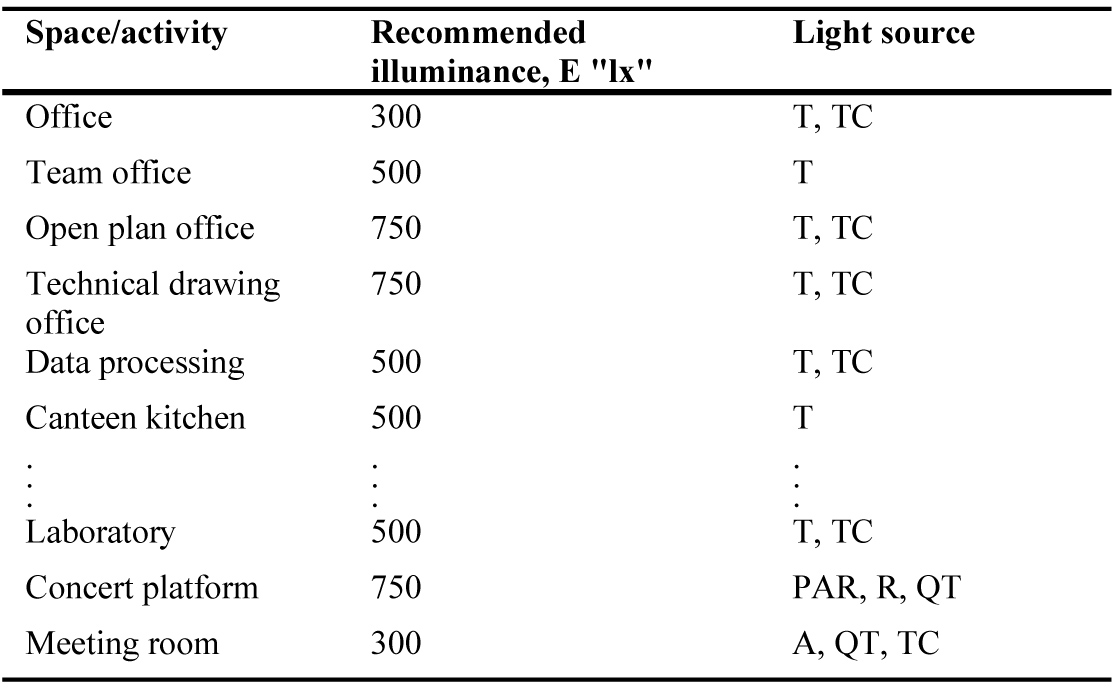 Table 1
Table 1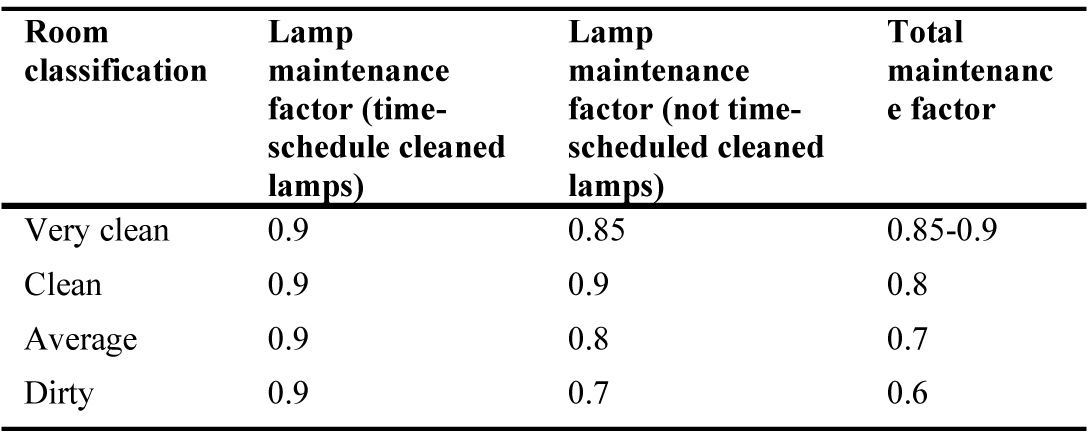 Table 2
Table 2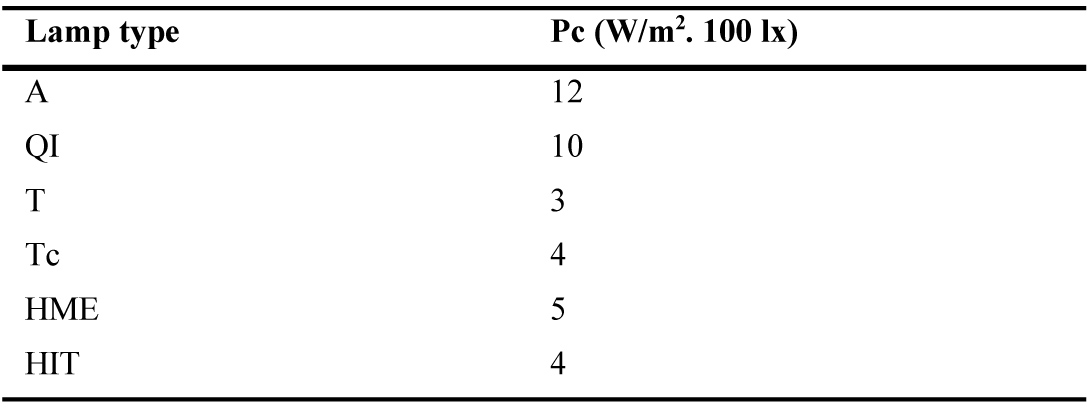 Table 3
Table 3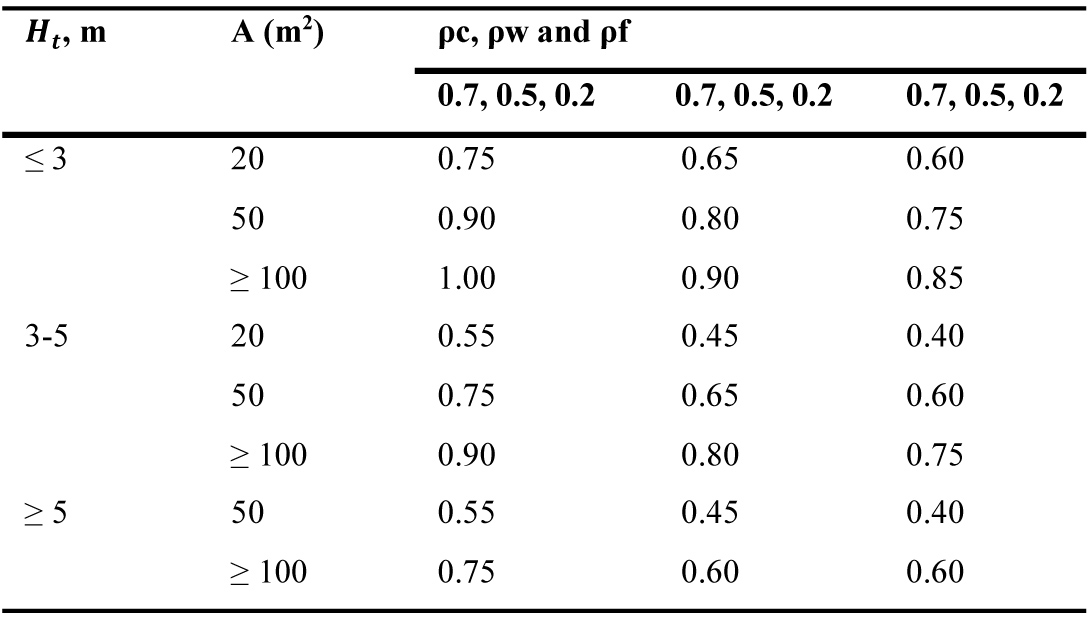 Table 4
Table 4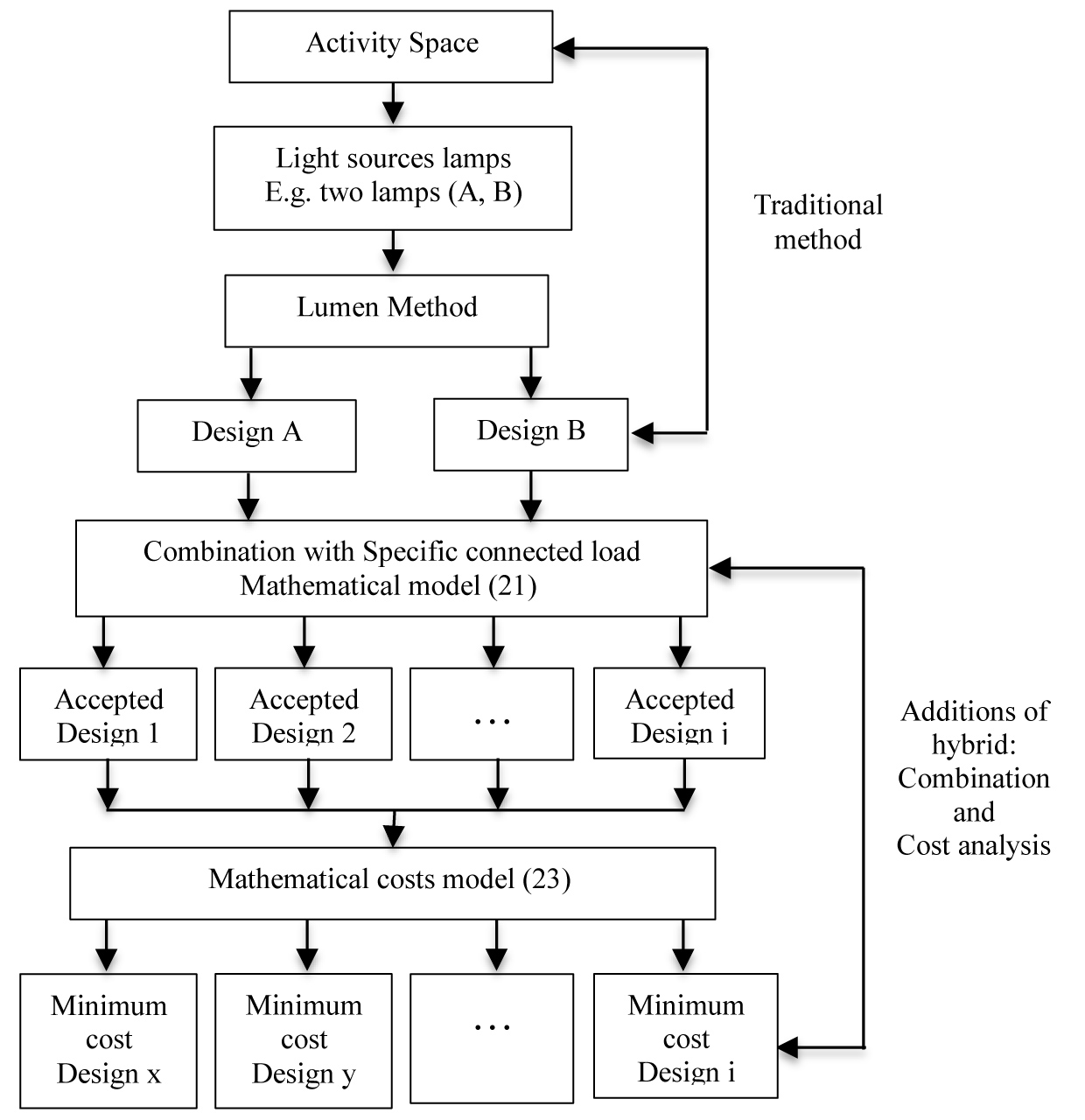 Figure 1
Figure 1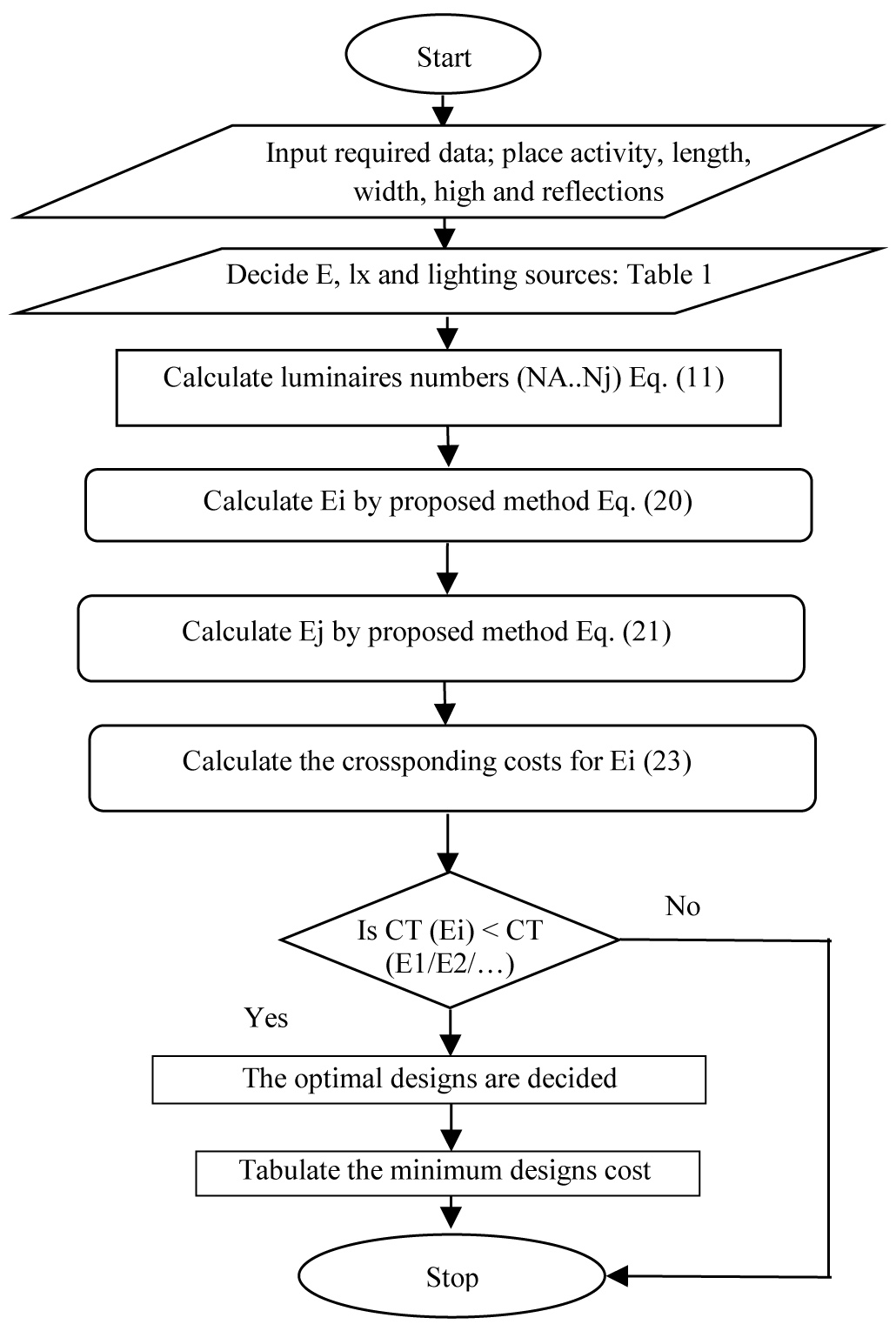 Figure 2
Figure 2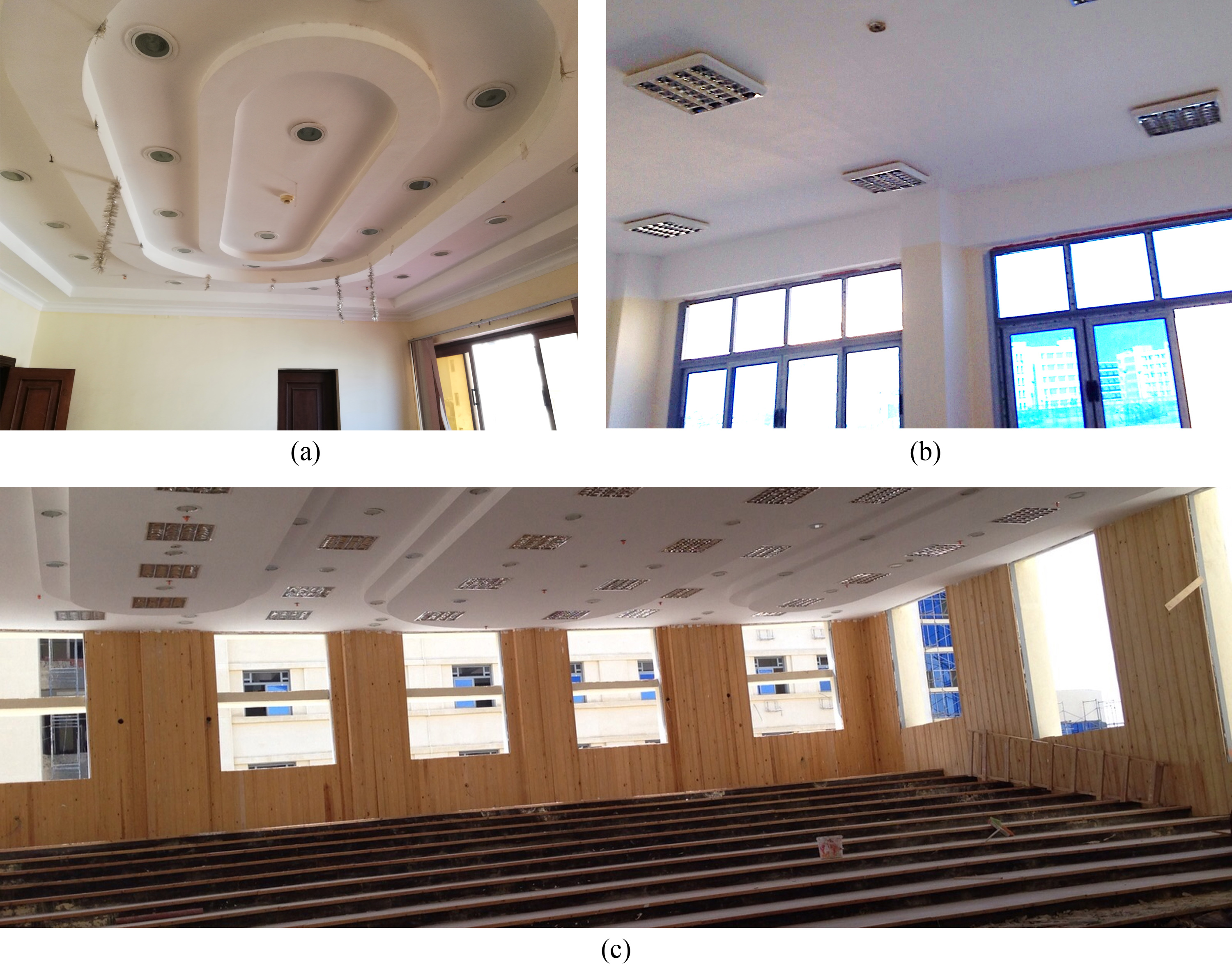 Figure 3
Figure 3 Table 5
Table 5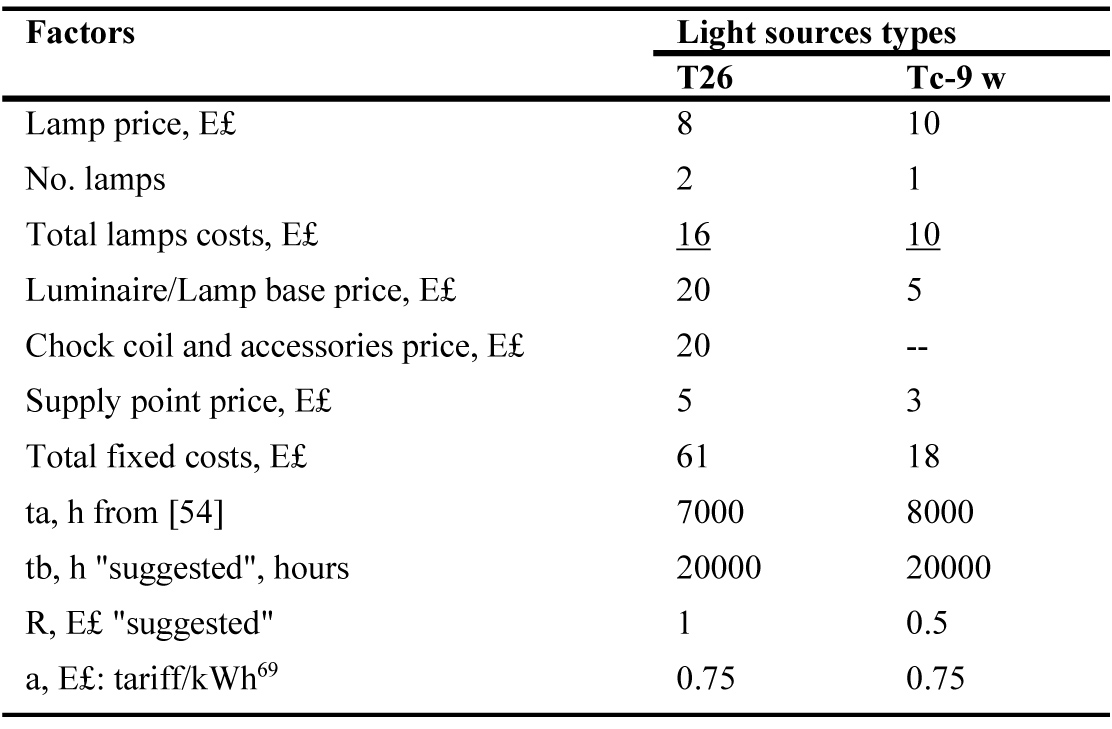 Table 6
Table 6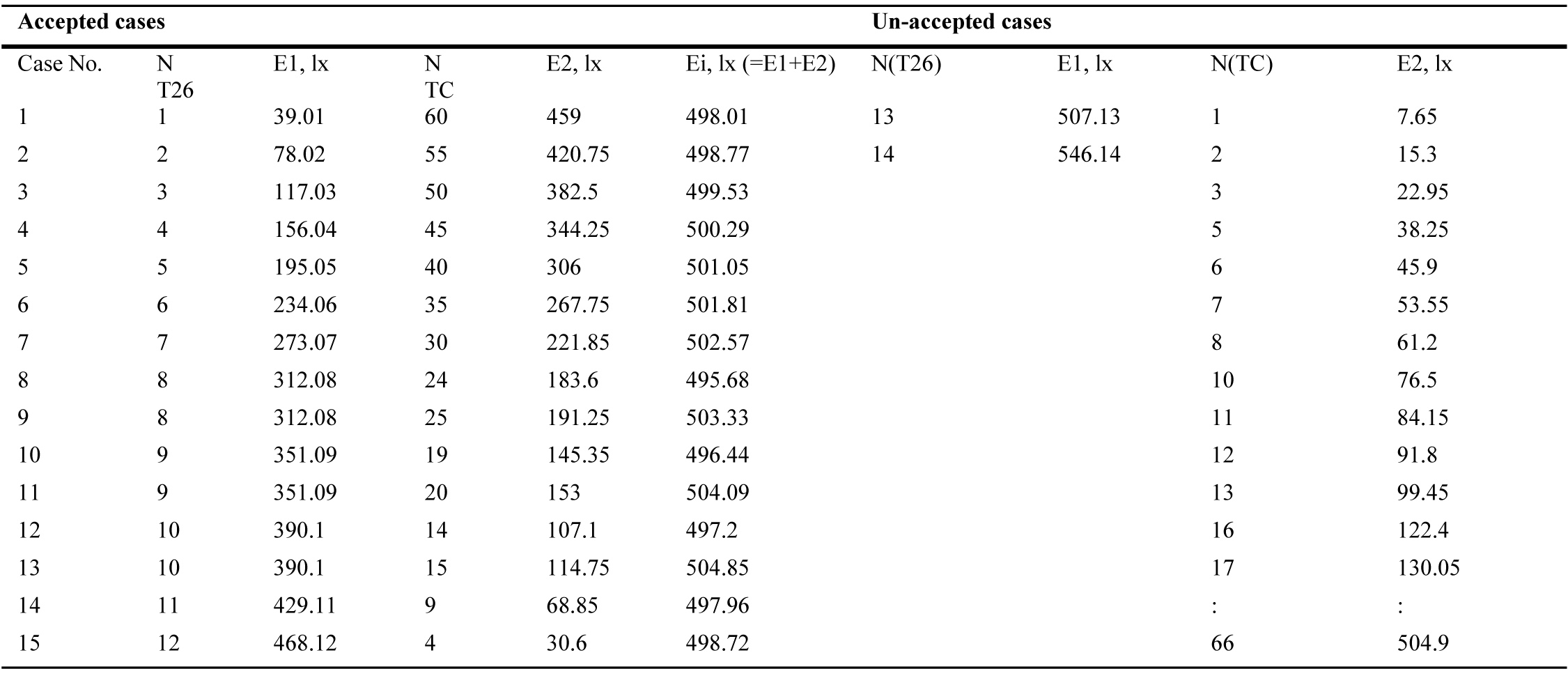 Table 7
Table 7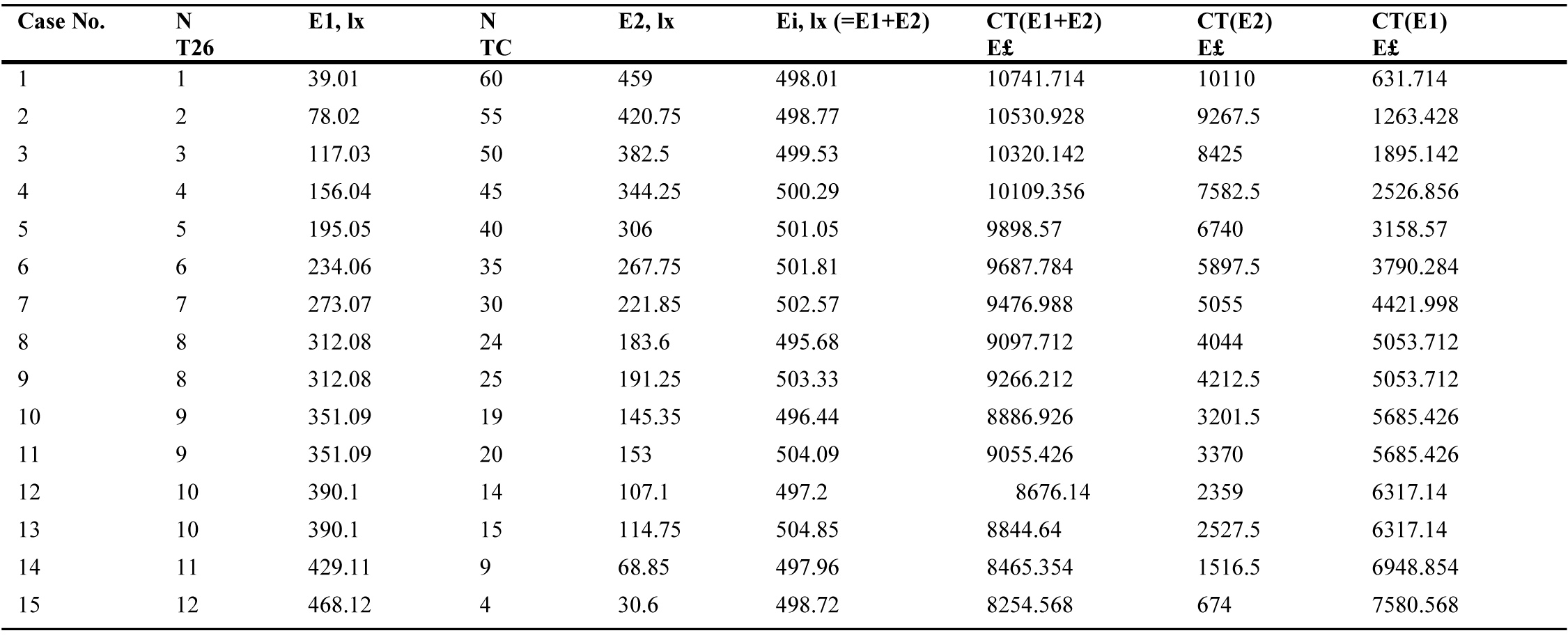 Table 8
Table 8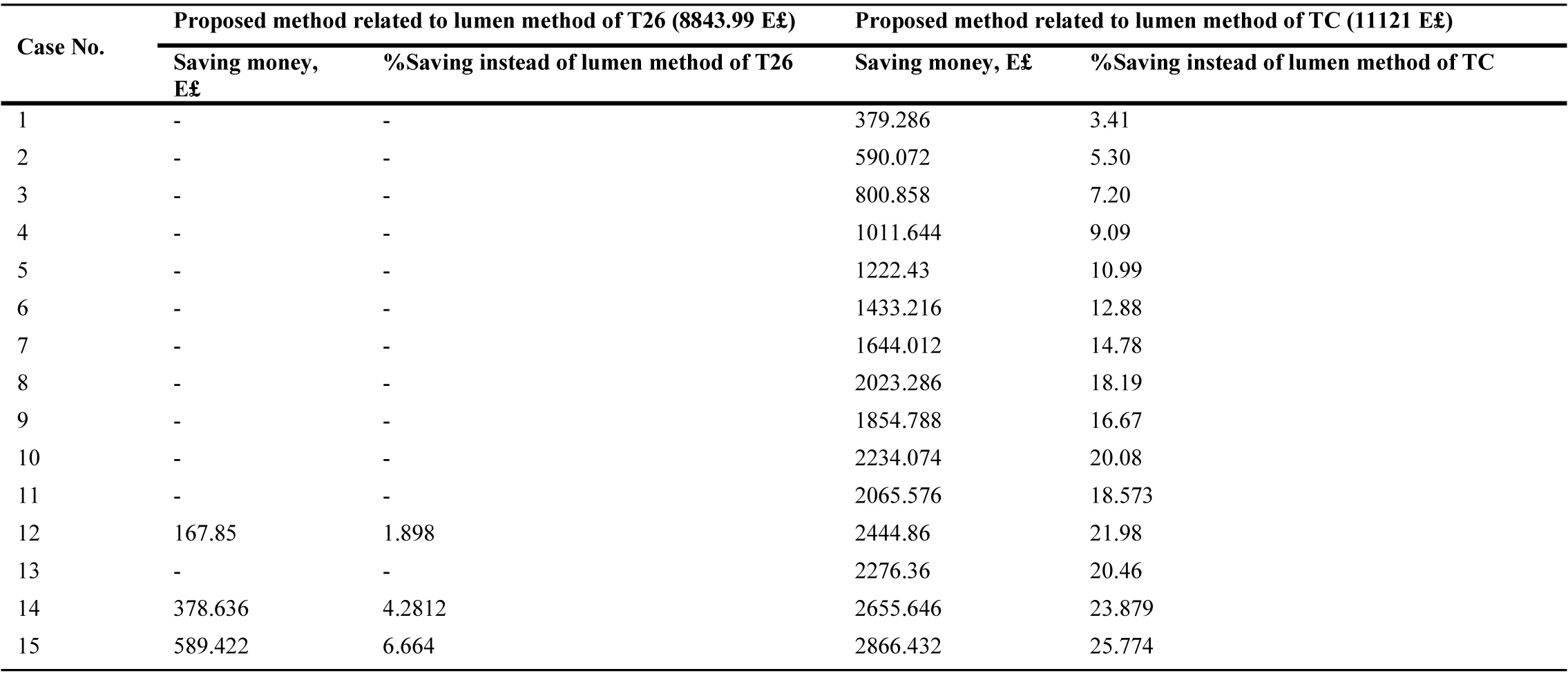 Table 9
Table 9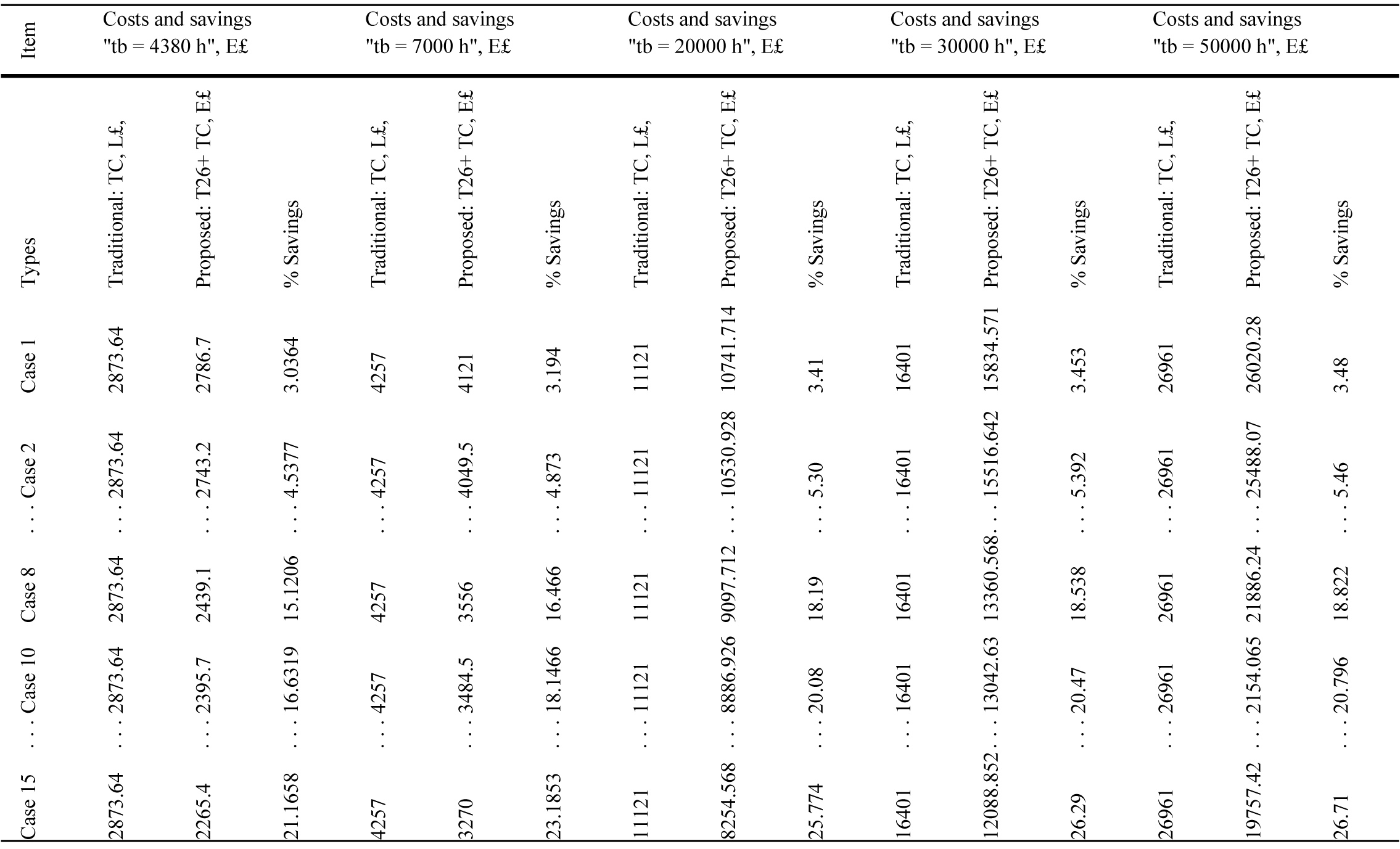 Table 10
Table 10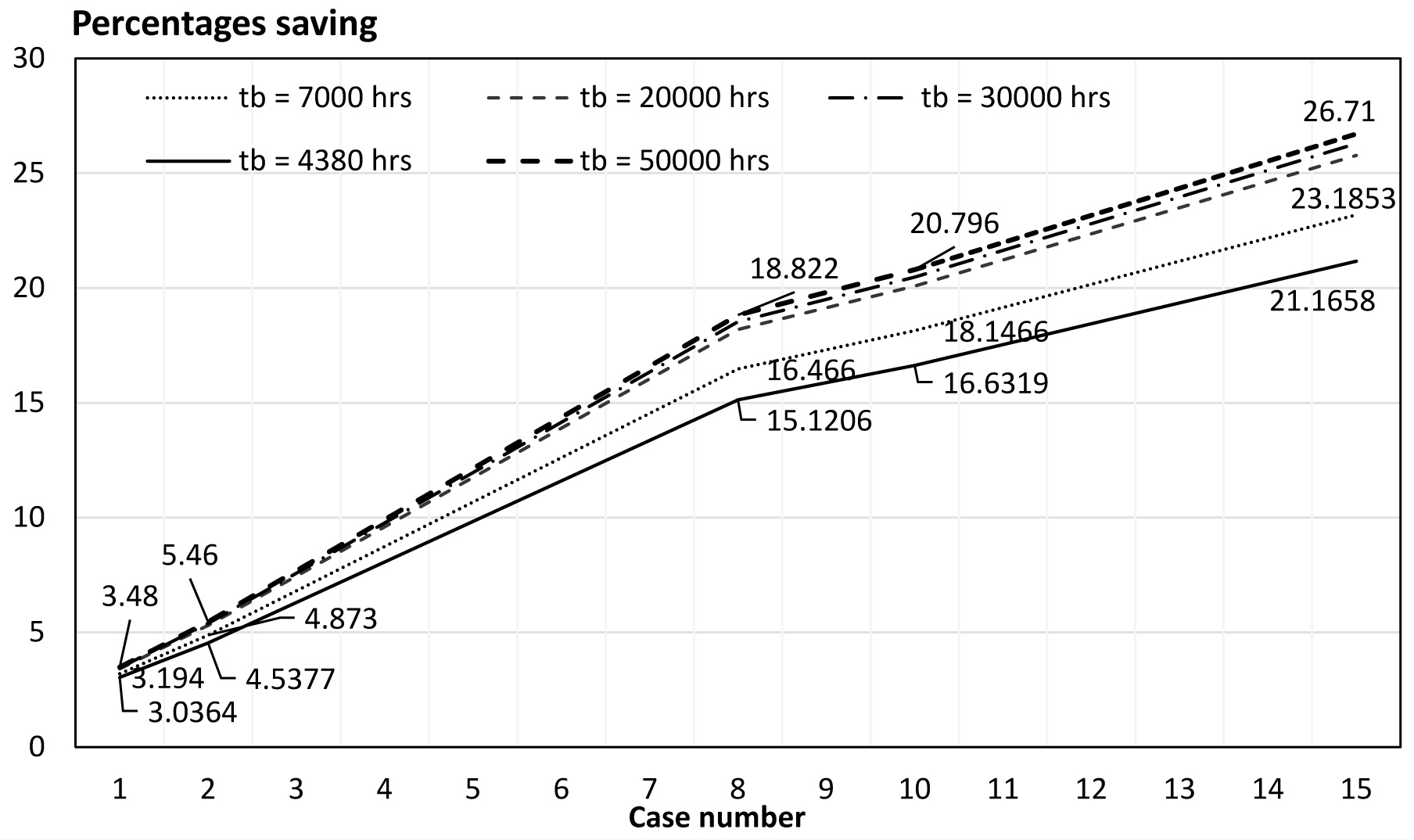 Figure 4
Figure 4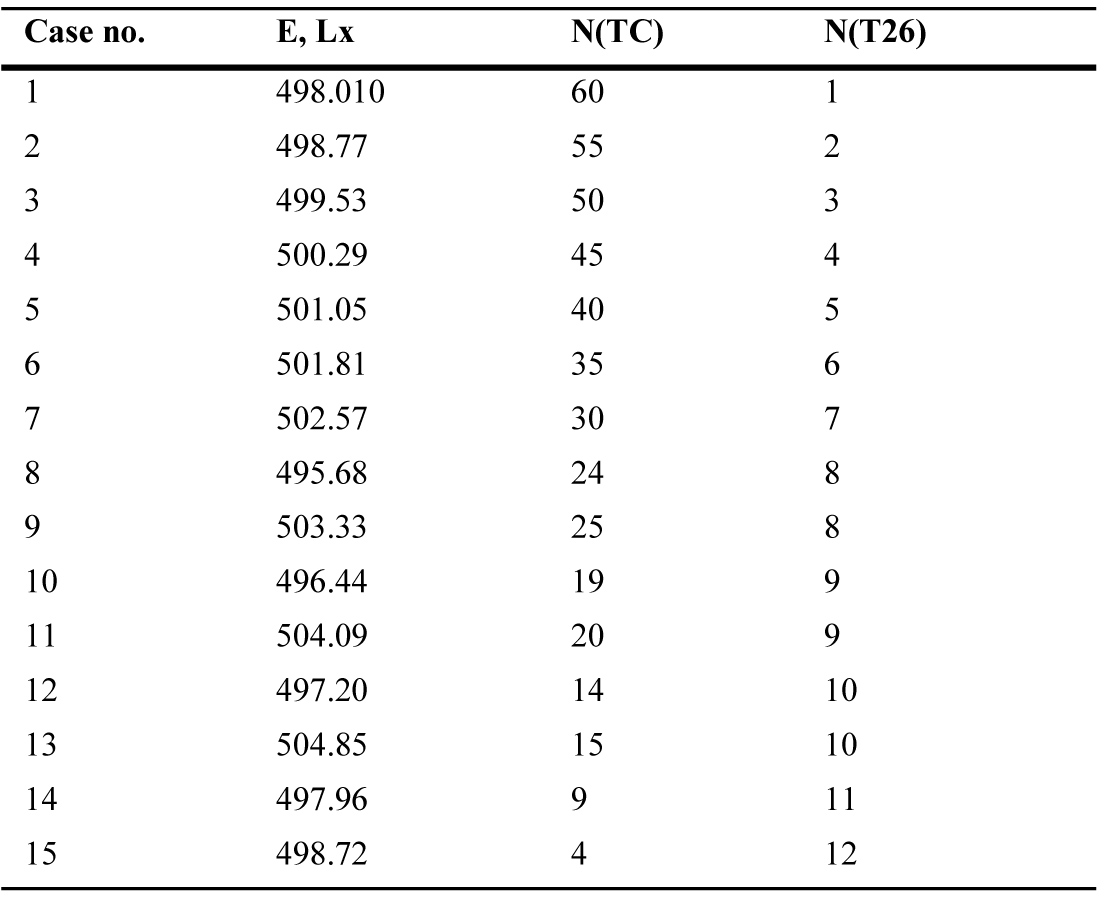 Table 11
Table 11 Table 13
Table 13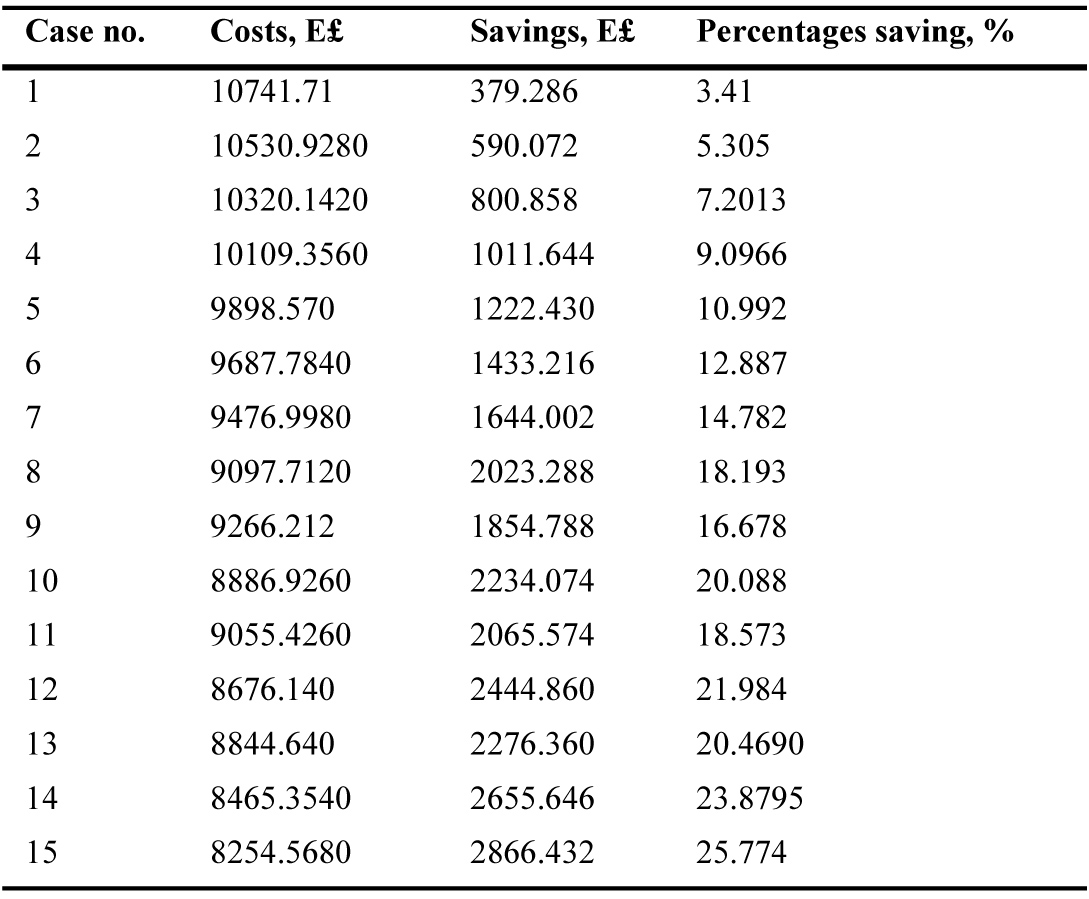 Table 14
Table 14 Table 15
Table 15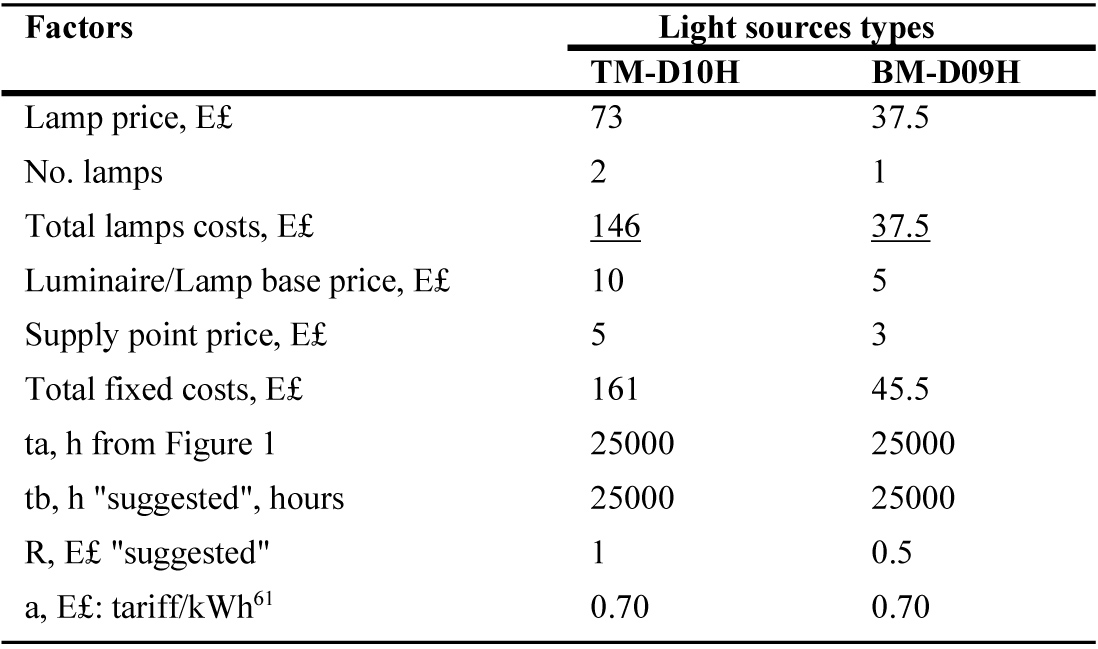 Table 16
Table 16 Table 17
Table 17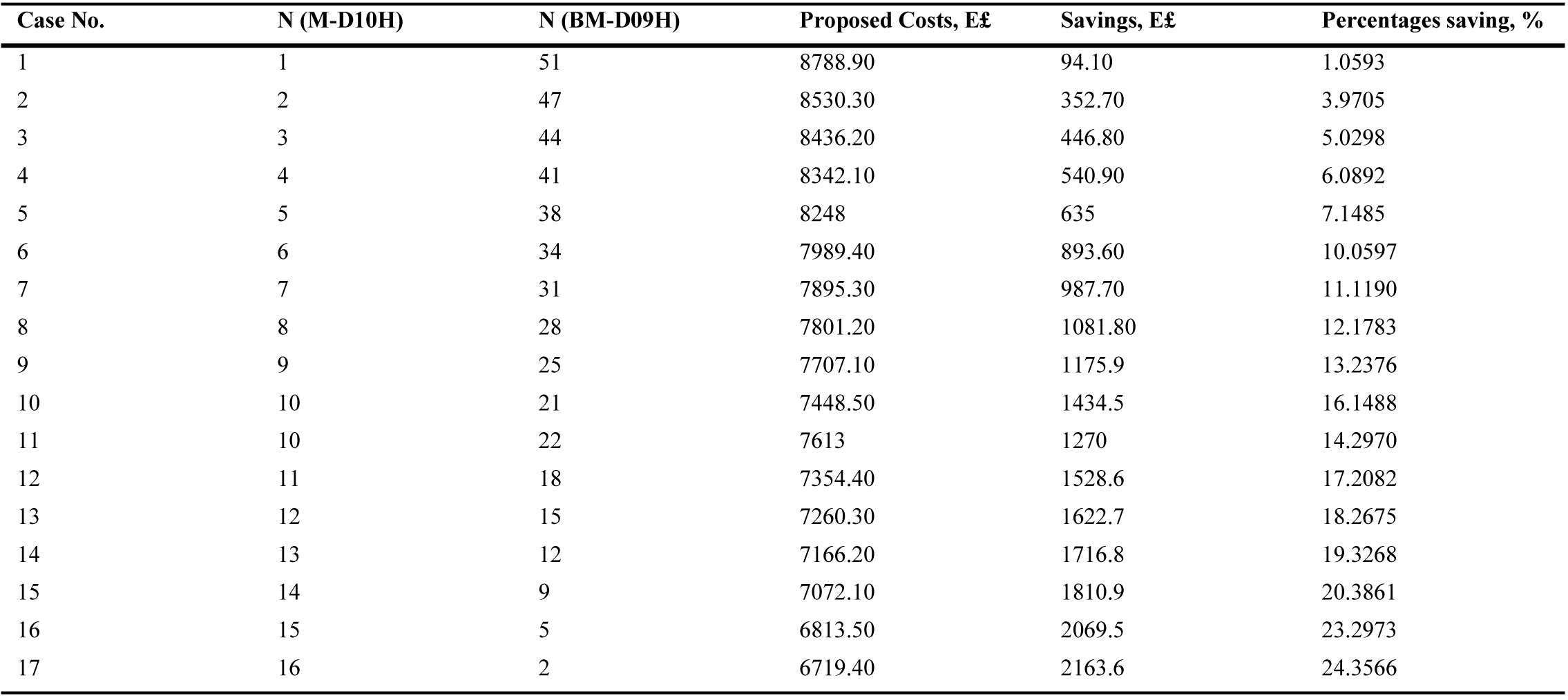 Table 18
Table 18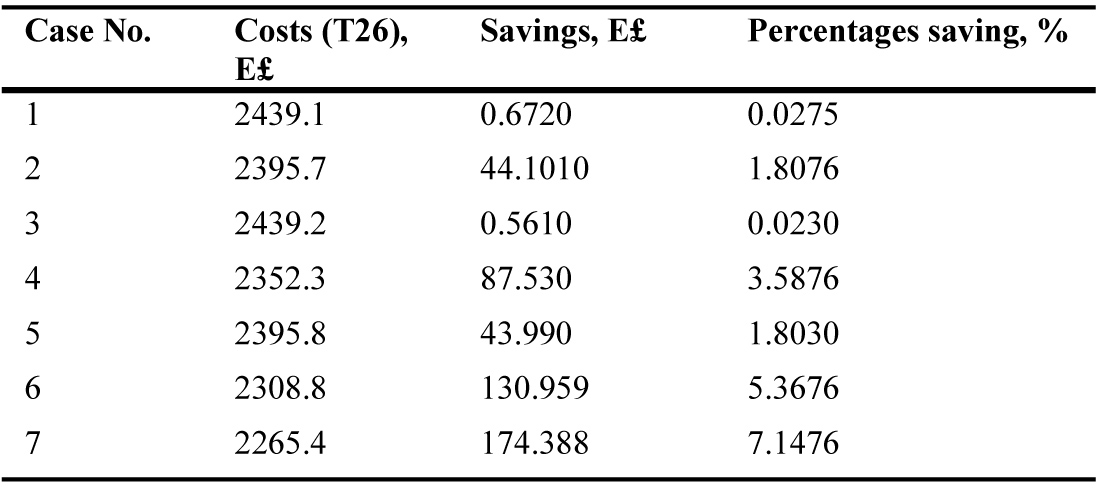 Table 19
Table 19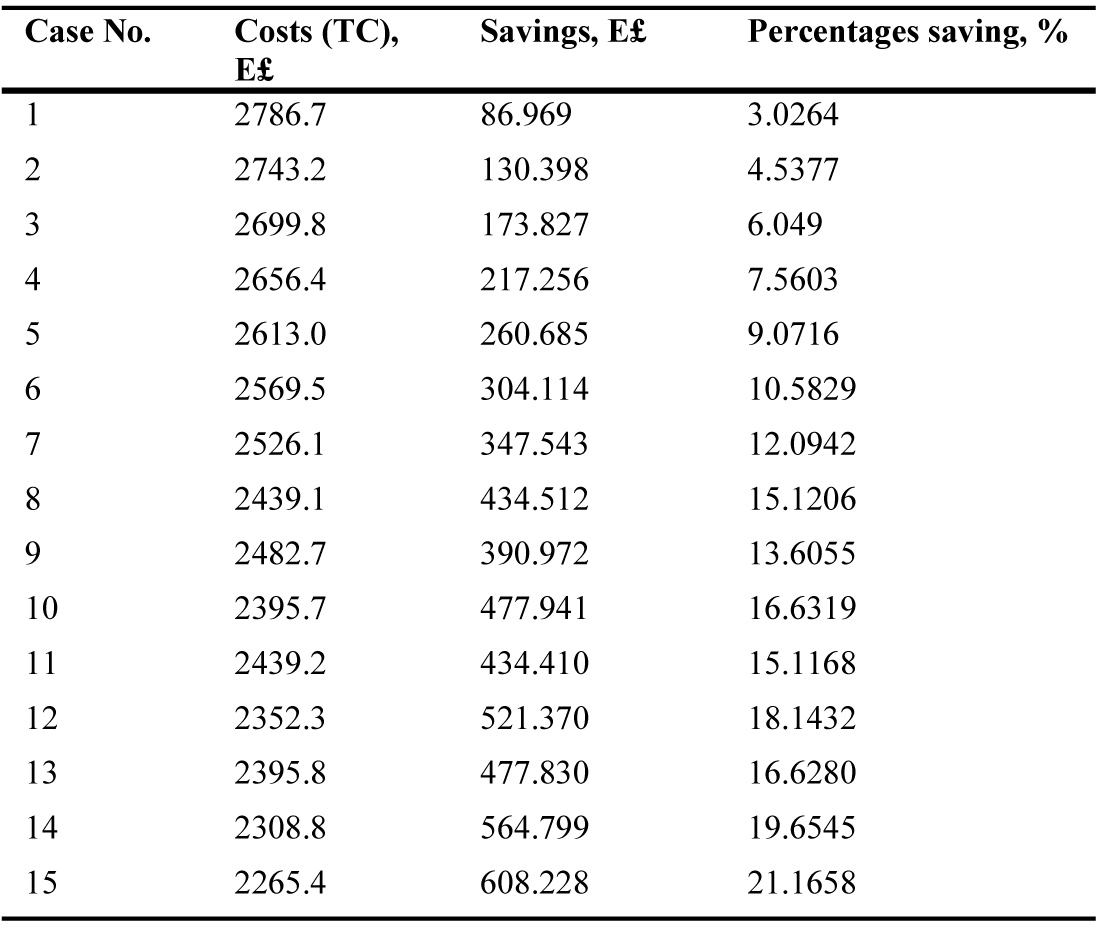 Table 20
Table 20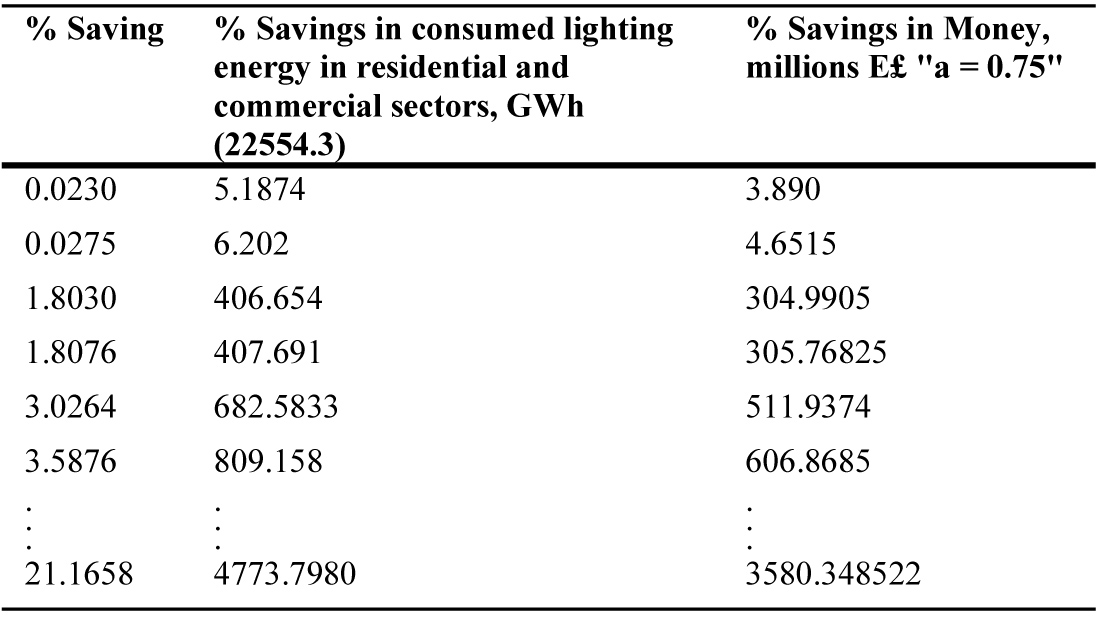 Table 21
Table 21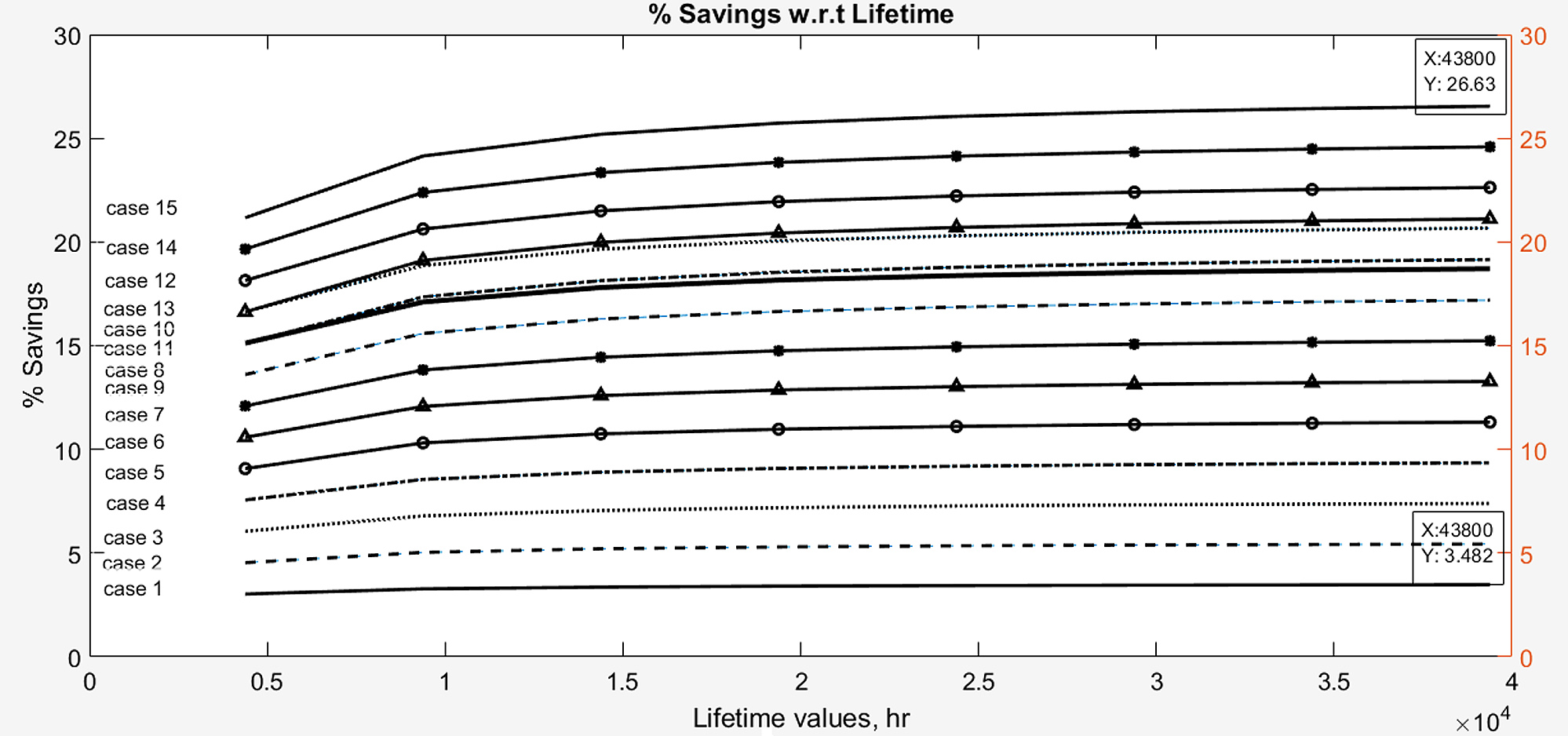 Figure 5
Figure 5